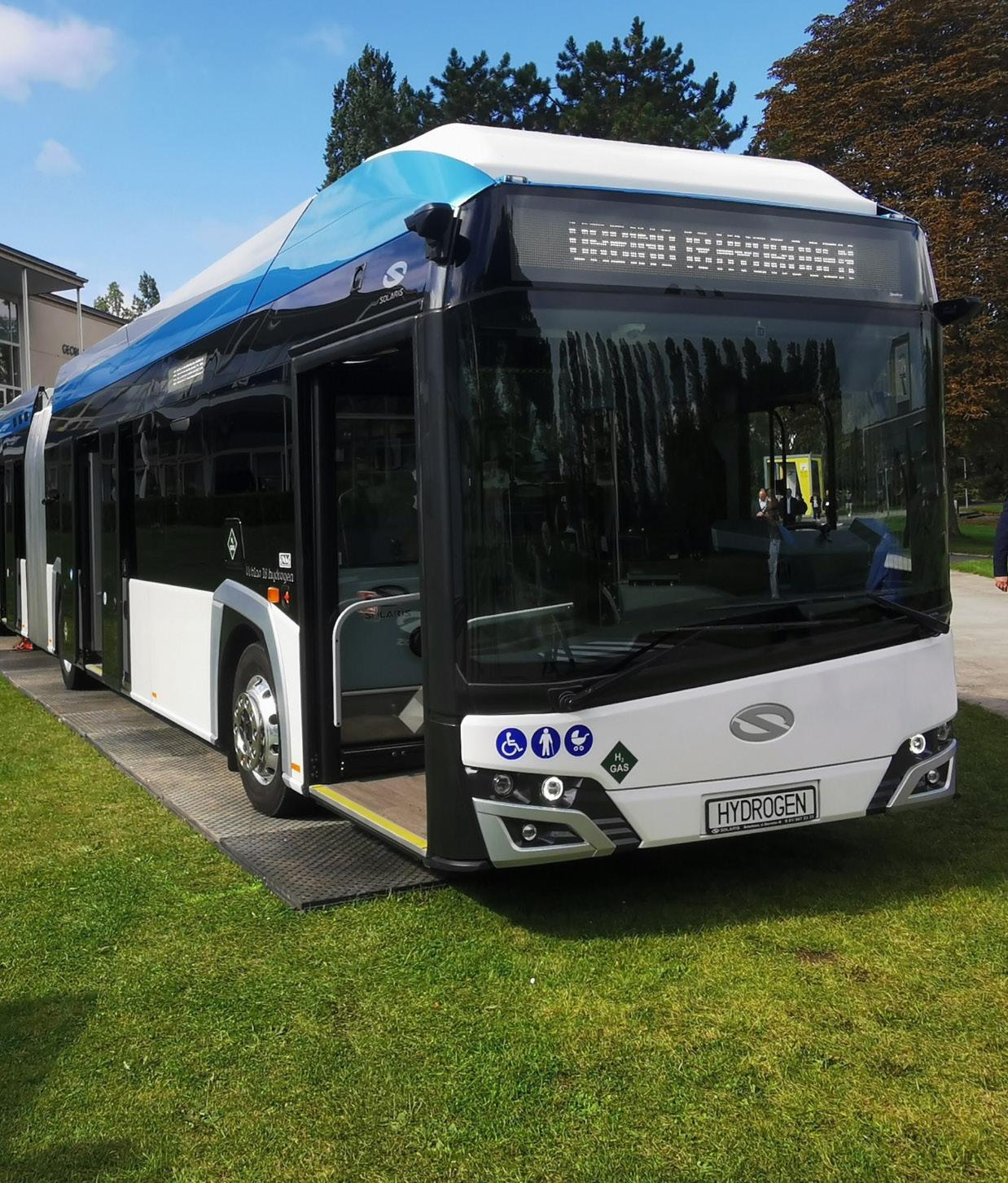












private cars from the road as they can easily be implemented without first building a costly infrastructure network. However, to bring about modal shift, buses must offer a true alternative to private cars in terms of comfort, speed and convenience.
Dear Readers,
Welcome to our second issue of the Bus-News e-magazine of 2022.
Some of our editorial team, including me, recently returned from InnoTrans in Berlin, which focuses largely on the rail sector but has also had a Bus Display for a while now.
During InnoTrans many bus manufacturers unveiled new buses using emerging technologies such as battery power and hydrogen-powered fuel cells and during various events that were held the industry discussed ways to make buses fit for the future. Through autonomous vehicles serving rural areas, for example, or through greater integration with other transport modes to give passengers full door-to-door transport and offer a true Mobility-as-a-Service experience.
These are all laudable goals and it is vital the industry keeps developing and exploring new technologies and improvements.
Buses have great potential to remove
Existing technologies must work. Passenger information displays that show no or incorrect information lead to frustration and missed connections; a lack of segregated infrastructure keeps private vehicles more convenient. Even the most basic of features, such as providing the bus stop name, is not a given in the British city I live in.
We cannot just chase the new. So much could be done by making the technology we already have work well.
And political will is also required for modal shift. It is not the bus industry that can implement dedicated bus lanes with signal priority for example.
Our next Bus-News magazine will be published on 20 January 2023. If you want to be featured on the BusNews website or in our e-magazine, please get in touch with Andrew Lush at al@a2bglobalmedia.com or call +44 7432 725001.
enjoy
final
Cordero Sapién,
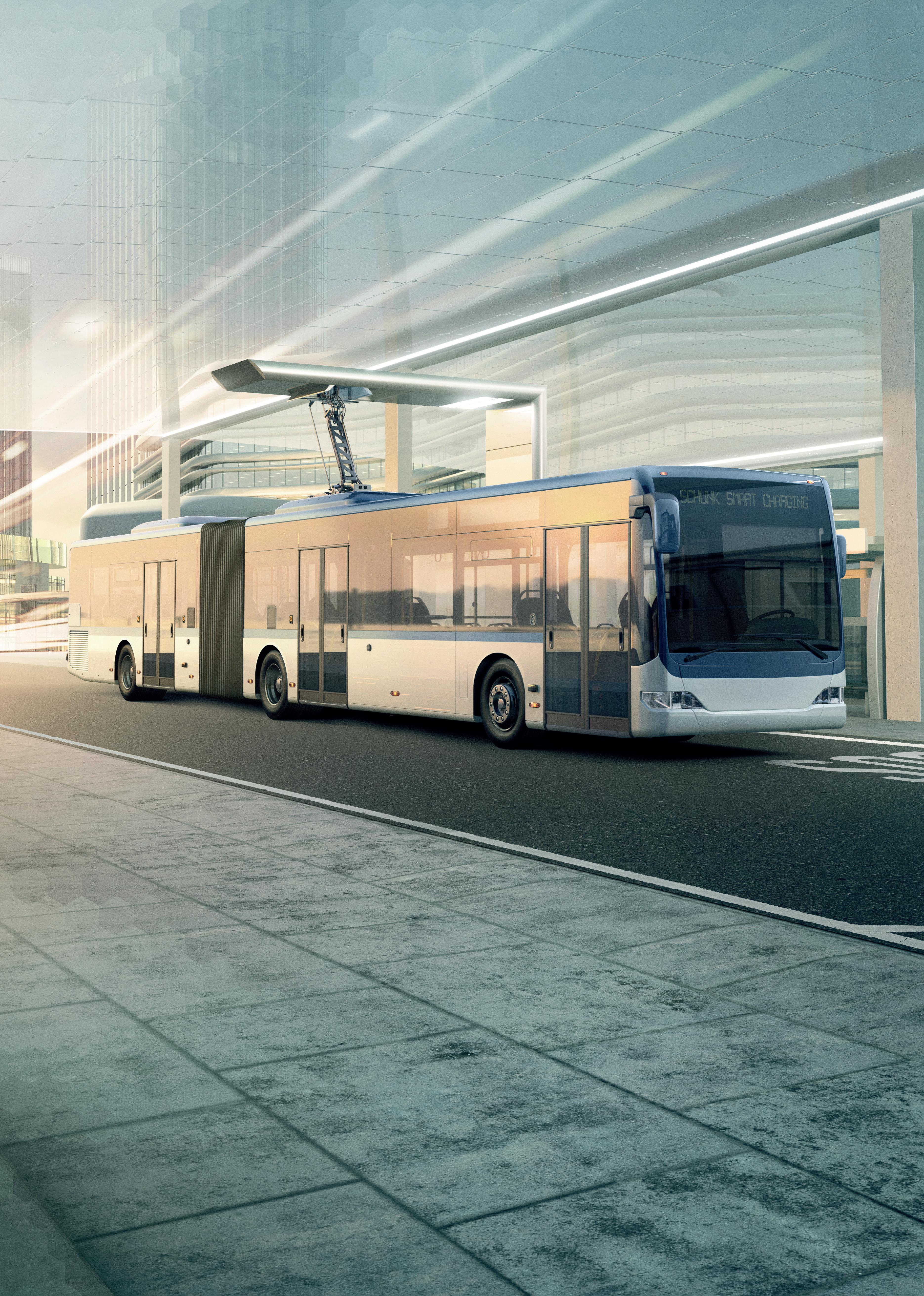










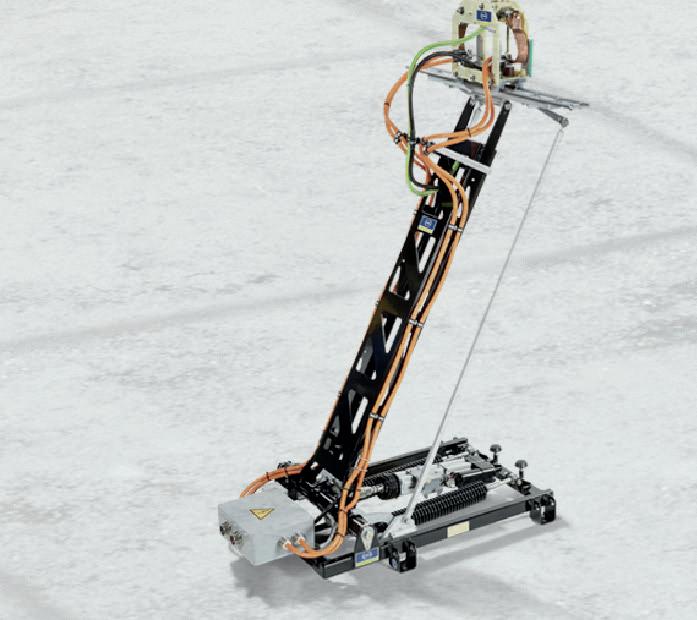



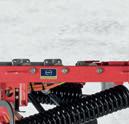



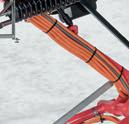


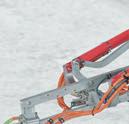









A look at what to expect at this year’s Euro Bus Expo, which will take place in Birmingham, UK in November.
A directory of bus suppliers for digital solutions, bus design & interiors, maintenance & servicing, electrification & power, and services. Read about all the latest innovations and product developments in the bus sector.
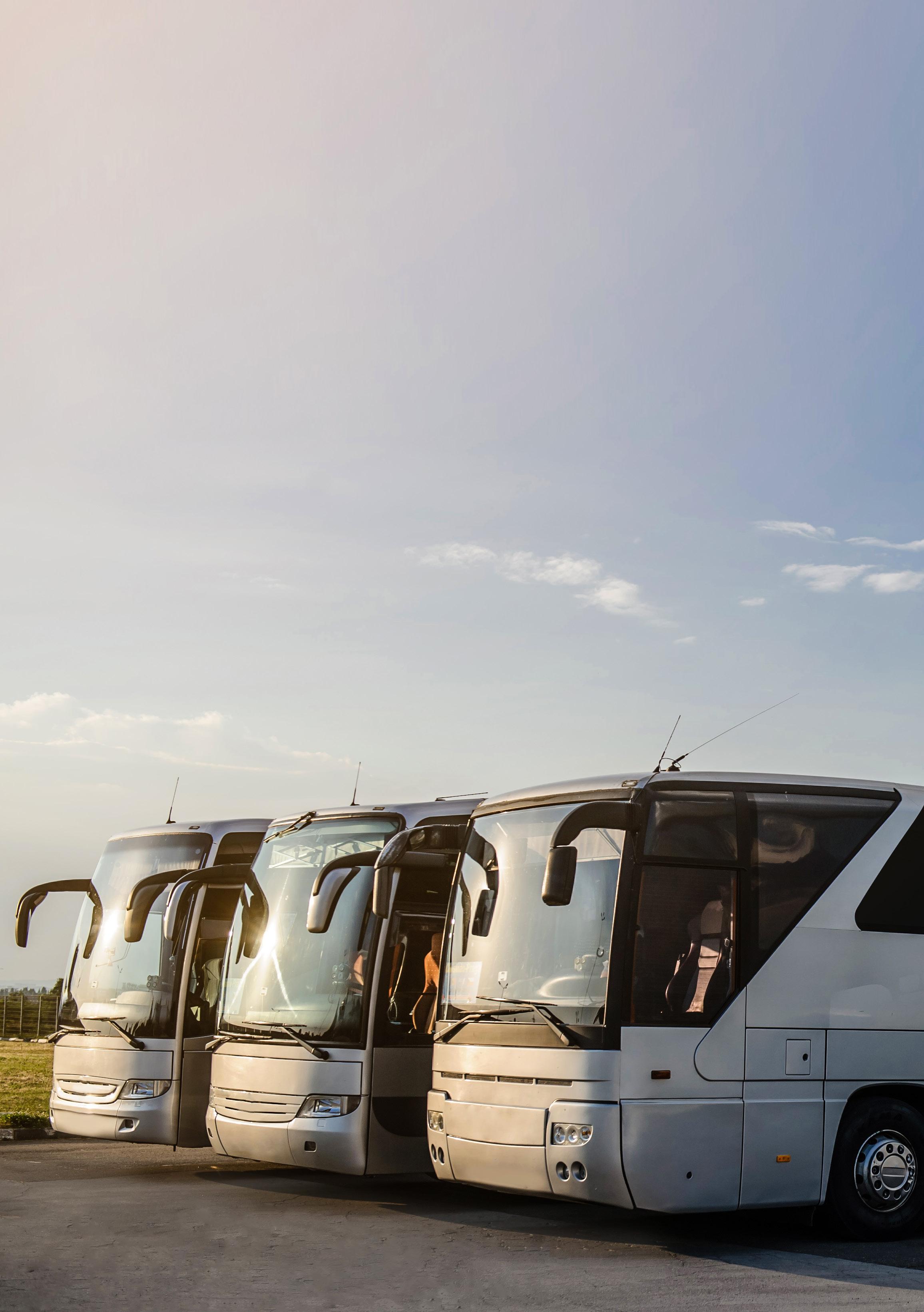
Bus Design & Interiors p.13
Maintenance & Servicing p.21
Electrification & Power p.29
Digital Solutions p.37 Services p.59
Tiana May takes a look at the different buses that were on display at InnoTrans this year and at the key industry talking points about what bus transport might look like in the future.

October 2022–April 2023
This Euro Bus Expo was originally meant to take place 3–5 November 2020 but was postponed twice, once to 2021 and a second time to the current date because of the pandemic. Now, however, it is back for the first time since 2018 with some new and exciting features.
The Euro Bus Expo, which styles itself as the ‘definitive exhibition for bus & coach professionals’, will see exhibitors showcasing their buses, coaches, mini and midi vehicles as well as equipment, components and services.
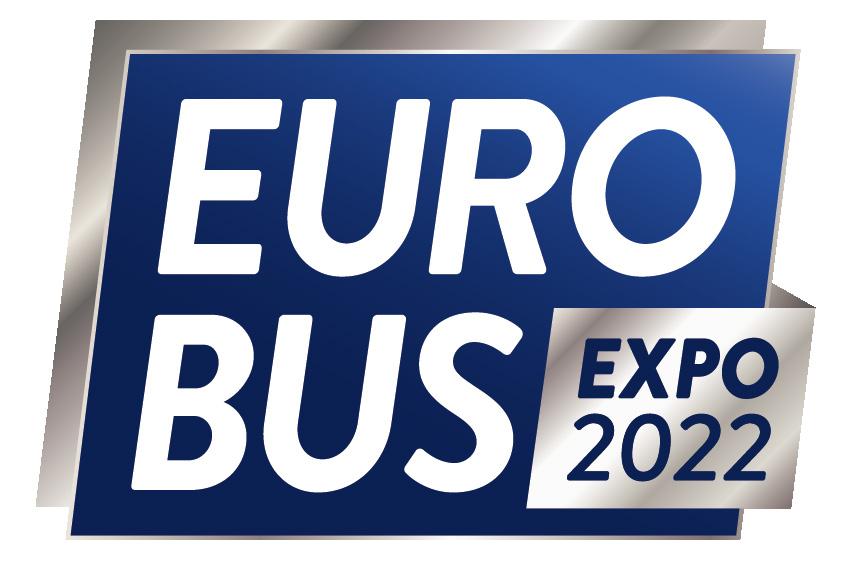
Visitors to the show will be able to see vehicles that are low and zero
emission at the tailpipe; mechanical and engineering developments; accessibility and safety products; as well as other innovative technologies for the bus market. In 2018, almost 9,000 individuals attended the event.
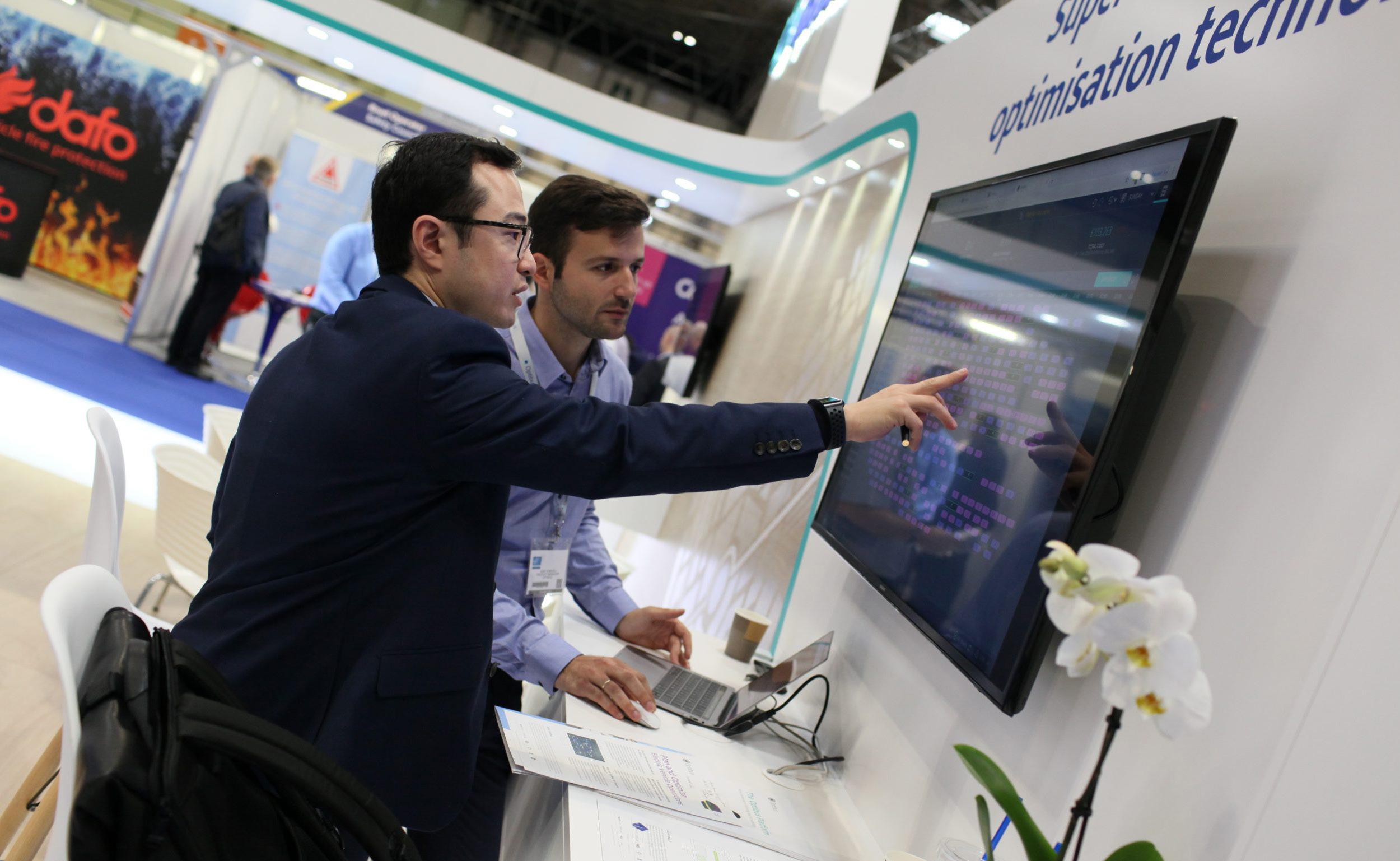
There will be approximately 130 vehicles on display at major exhibition stands, at the Outside Vehicle Display and in the Zero Emission Zone.
For example, Alexander Dennis will showcase its double-deck hydrogen fuel cell-electric Enviro400FCEV;
Equipmake will present its Jewel electric double-deck bus; and there will be a Yutong battery-electric model on display from the Pelican Bus and Coach fleet.
Vehicle exhibitors include: Volvo, Switch Mobility, VanHool, Temsa, Scania and many others.
The Zero Emission Zone is a new addition to the Euro Bus Expo this year. It will highlight the latest vehicles that are reducing their carbon impact compared to conventional buses. Manufacturers will perform demonstrations.
The Innovation Challenge is another feature making its debut at this year’s Euro Bus Expo, though it was originally launched at Coach & Bus UK in 2019. It aims to bring together the ‘most notable product and service developments from across the industry’. The challenge is exclusively open to exhibitors who are able to enter their product or service at the expo or in the 24 months leading up to the event. Entries will be displayed in the Innovation Challenge Gallery where visitors can vote for their favourites on the first and second days of the
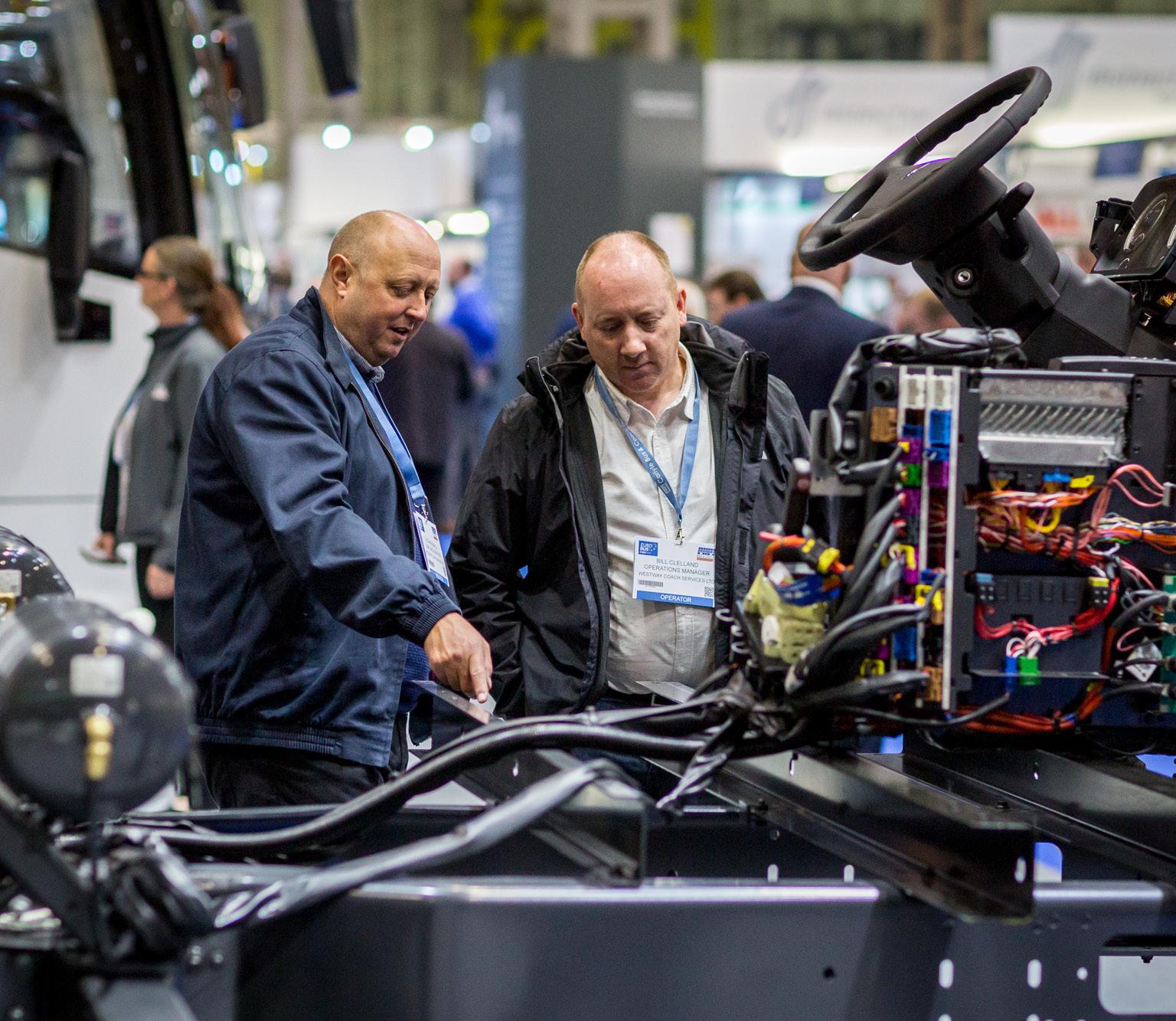
the most votes will get to deliver a 90-second pitch of their product or service to a panel of industry judges and visitors in the Masterclass Theatre. After that, the judges will award bronze, silver and gold certificates.
The event will feature presentations, panel and interactive roundtable discussions with informative topics to educate visitors about trends and developments in the bus and coach sector and deliver insights from leading industry figures.
decarbonisation, looking at the goals and challenges the industry faces in meeting governmental netzero targets. There will be a further focus on the impact of this on small and medium-sized operators.
Under Secretary of State at the Department for Transport, will give the opening keynote speech in the Masterclass Theatre at 11am on 2 November. She will address the British government’s priorities for the bus and coach market.
The Confederation of Passenger Transport (CPT) is the official show
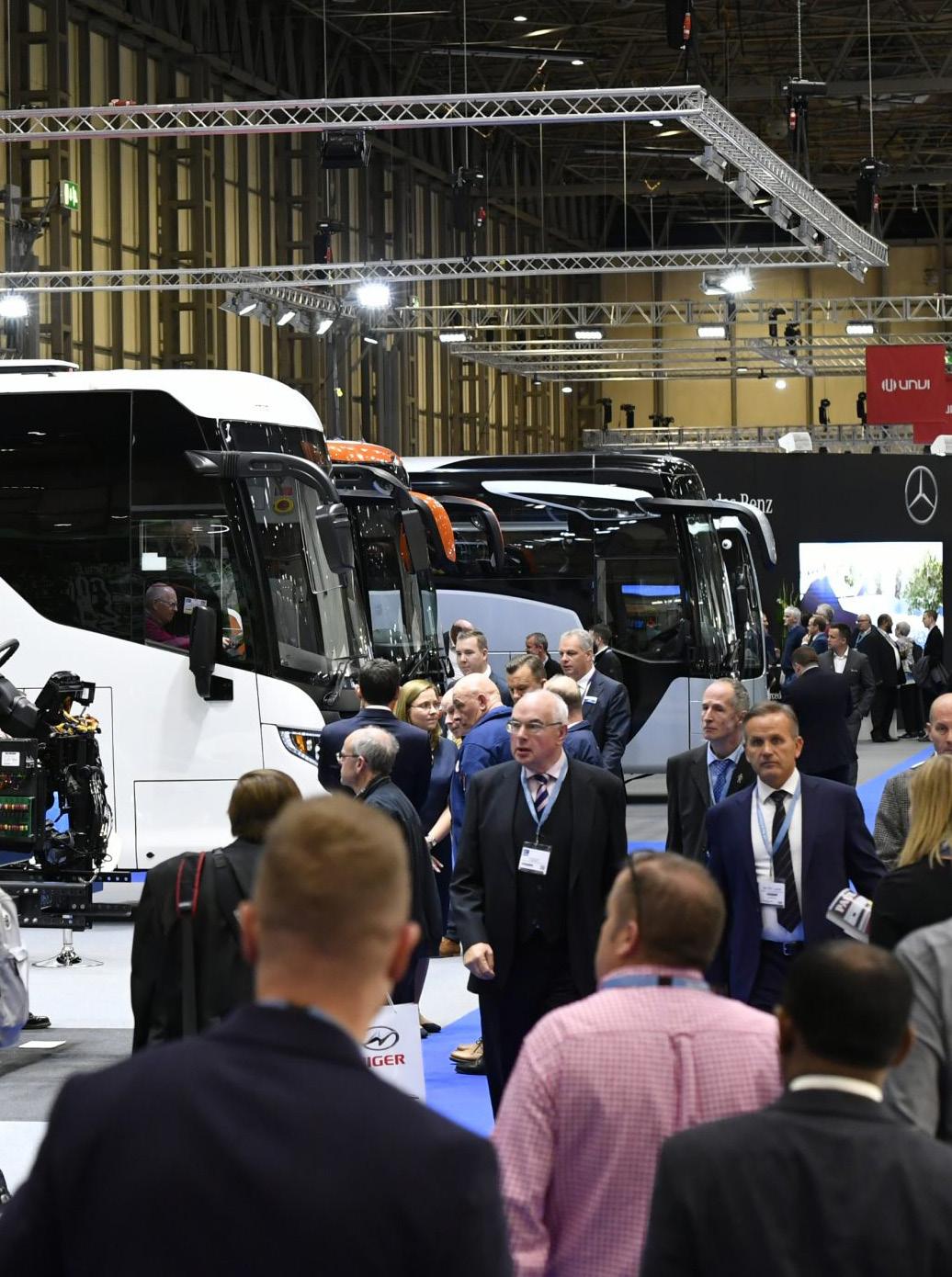

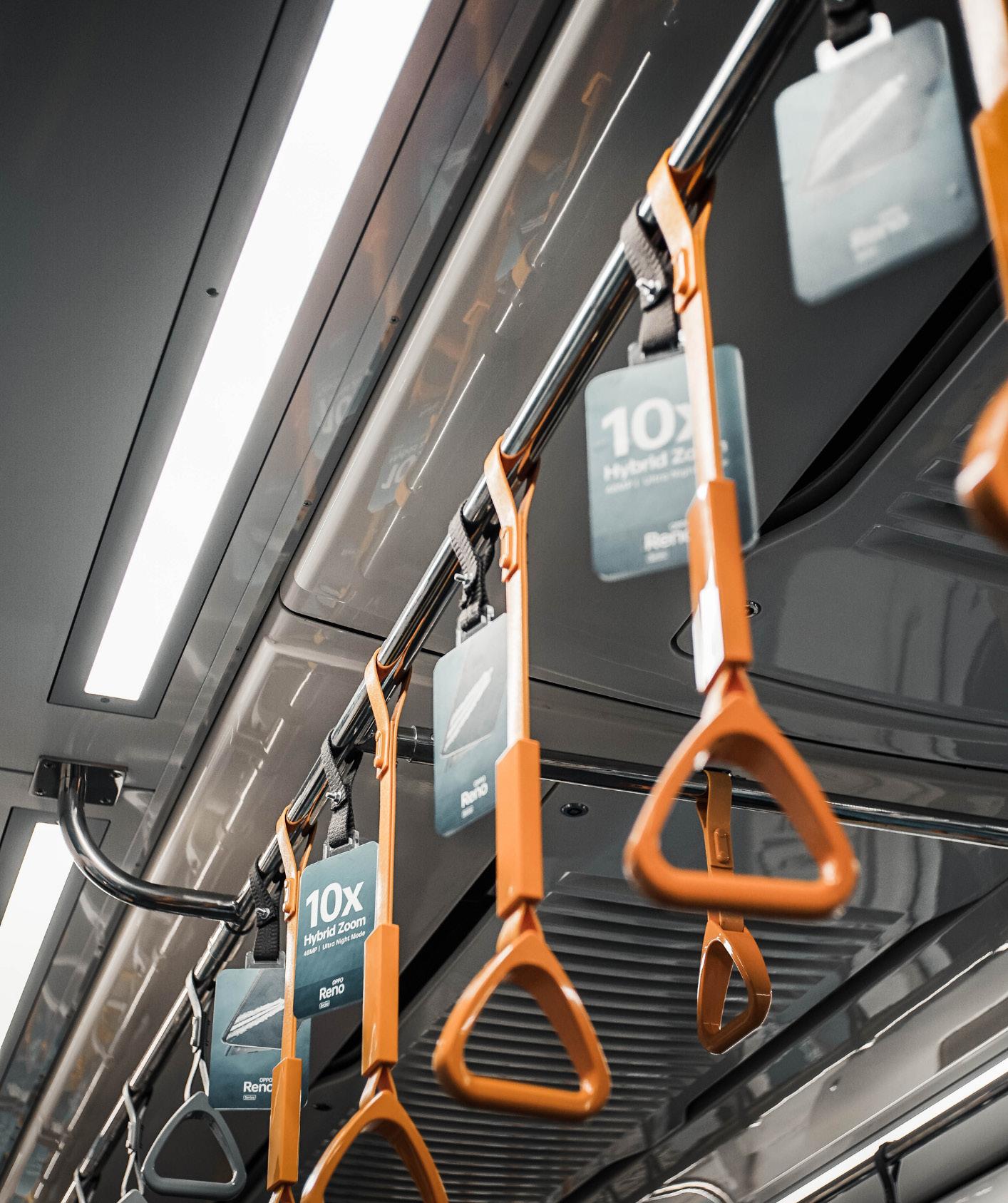
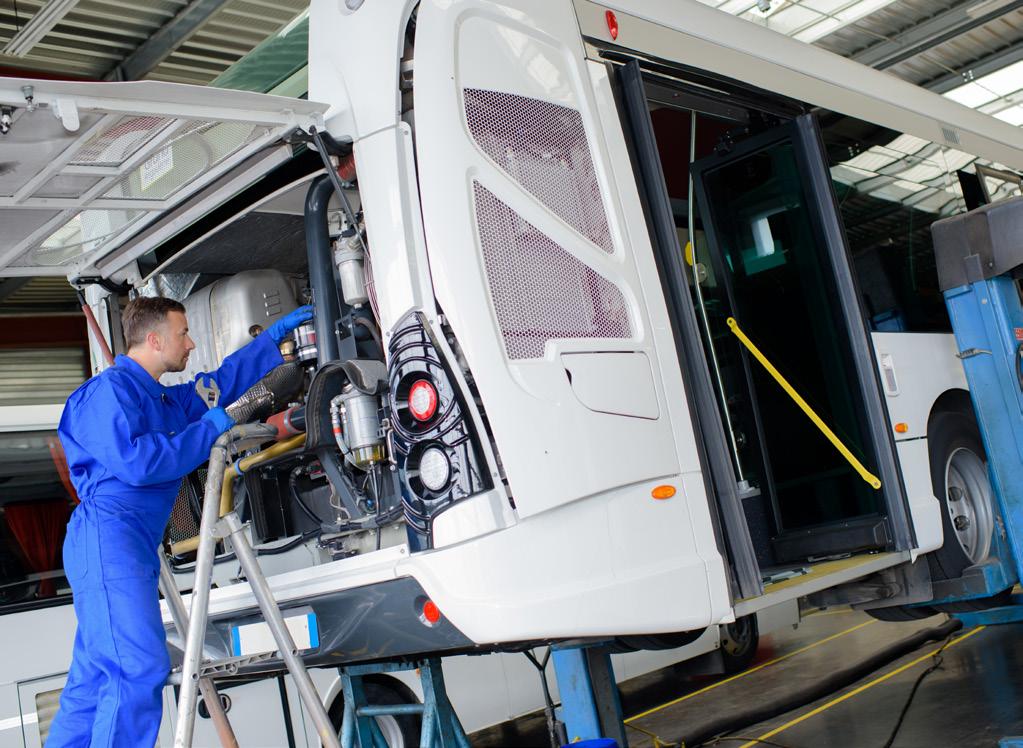
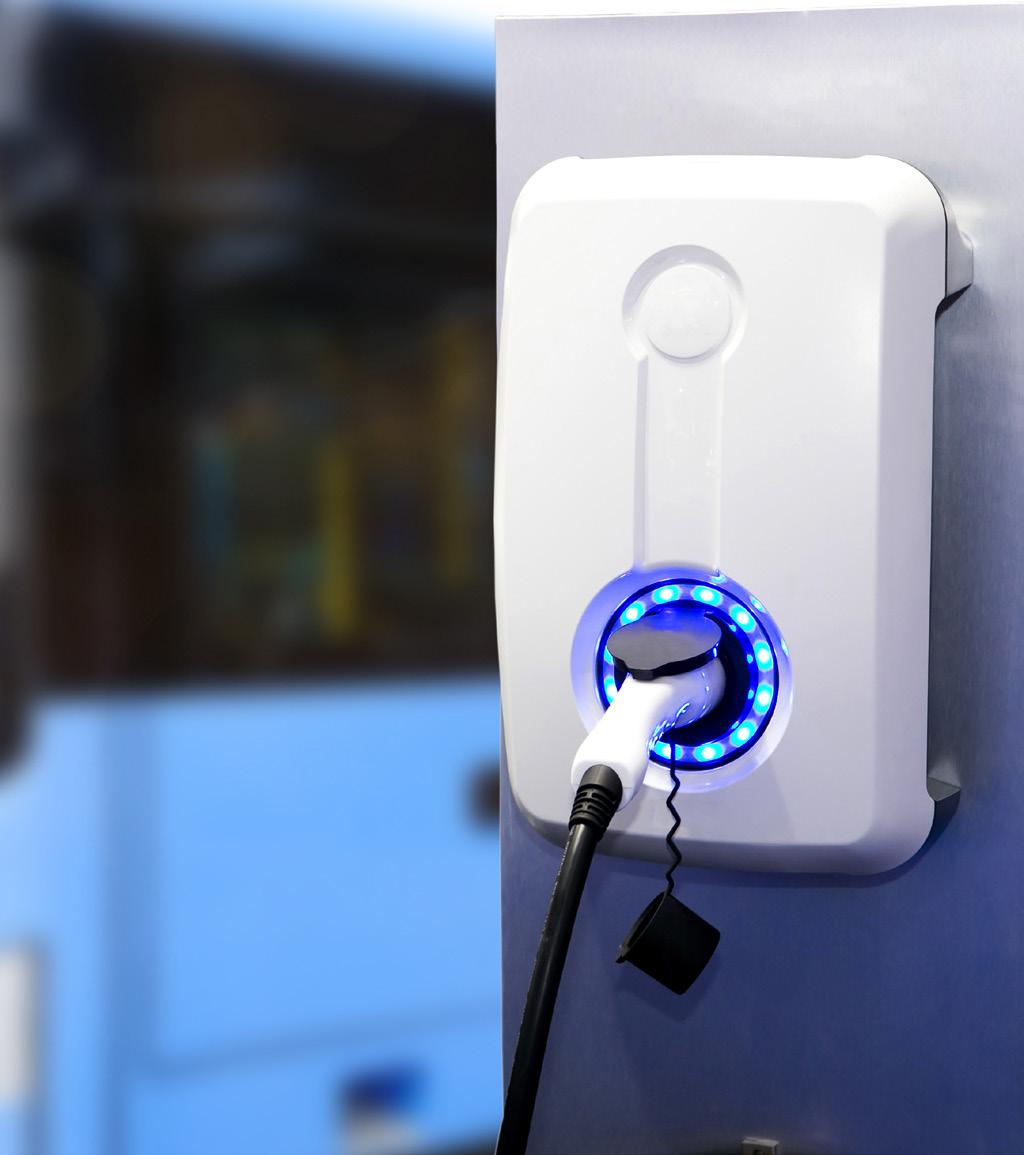
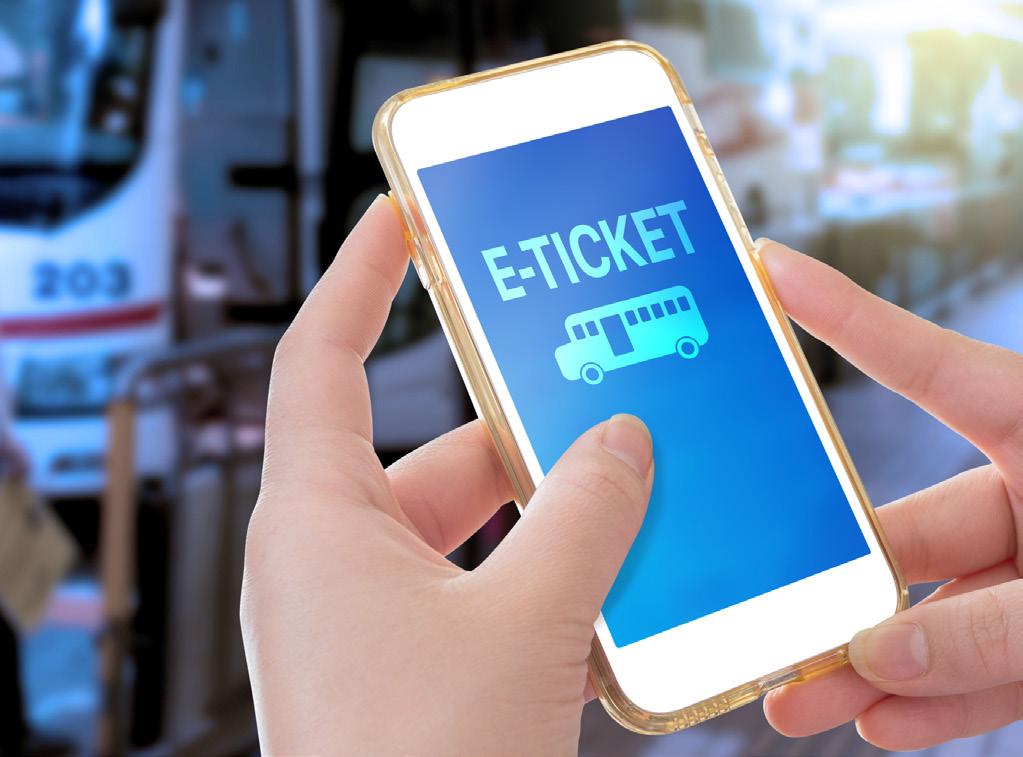

This September, InnoTrans 2022 took place in Berlin after a 4-year absence. Despite its primary focus on the railway industry, the event highlighted the necessity of intermodality to increase the railway’s capacity and help improve the wider transport network.
During the InnoTrans Press Tour, Verband der Bahnindustrie in Deutschland (VBD), which
The Qbuzz hydrogen buses only emit water vapour at the tailpipe © a2b Global Media

represents rail system manufacturers in Germany, stressed that the rail network alone could not compete with private road transport and intermodal switches were key for supporting railway efficiency.
Michal Krapinec, CEO of Czech Railways, echoed this view at the event’s Opening Ceremony, arguing that the rail industry should not
be trying to compete with the bus sector, but should be working alongside it to encourage a modal shift away from private cars. Czech Railways has thus acquired its local bus services to combine bus and rail routes for first and last mile transport.
Meanwhile, the event’s Bus Display highlighted the ever-growing range of zero exhaust emission vehicles
that can be deployed to provide more sustainable transport. This included the world premiere of VDL’s Citea LF-122 100% electric bus and a demonstration of Busitalia’s hydrogen bus, 32 of which are currently operating in the Netherlands. Busitalia powers these vehicles with certified green hydrogen, which is produced as a by-product from a chlorine plant.

According to the ORR, 59% of households in England and Wales are not located within a 15-minute walk of a train station. Reliable bus services are consequently vital to aid such residents in accessing stations and connecting them to onward travel.
At the InnoTrans World Bus Forum, Dr Rolf Erfurt, CEO of Berliner Verkehrsbetriebe, stated that convenient mobility in rural areas shouldn’t mean someone needed to own a car. To achieve a modal switch, Erfurt stressed that operators had to go beyond simply offering a bus once an hour. Instead, on-demand services and connecting shuttles to transport hubs should be accessible and efficient from all areas.
Indeed, Werner Engl, Head of Global Sales at ZF Mobility Solutions, argued that rather than offering low-frequency services with a highcapacity vehicle, such as an hourly bus, it was much more beneficial for passengers in areas that weren’t densely populated to have access to conveniently timed services using lower-capacity vehicles. Engl believed that small but frequent
shuttles were ideal for such cases, as they reduced the waiting time for people in urban areas to reach their connections. Otherwise, if people were faced with long waiting times for a higher-capacity service, many people would simply choose to drive.
However, running more frequent but smaller services significantly increases staffing costs, as operators have to hire more drivers to transport the same number of passengers. As many companies are already struggling with staff shortages, this is a problematic side effect.
Alexander Stucke, Head of Bus Sales at QUANTRON AG, consequently argued that autonomous buses of all sizes were the most costeffective solution for the future bus
industry. This idea was naturally supported by ZF Mobility, which manufactures autonomous shuttles for this purpose. Engl said he anticipated that these vehicles would be integrated into the public transport network from 2025 in order to support and improve bus services.
In addition to providing first and last mile transport to connect people to rail services, buses can also be used to expand the capacity of high-demand urban transport networks.
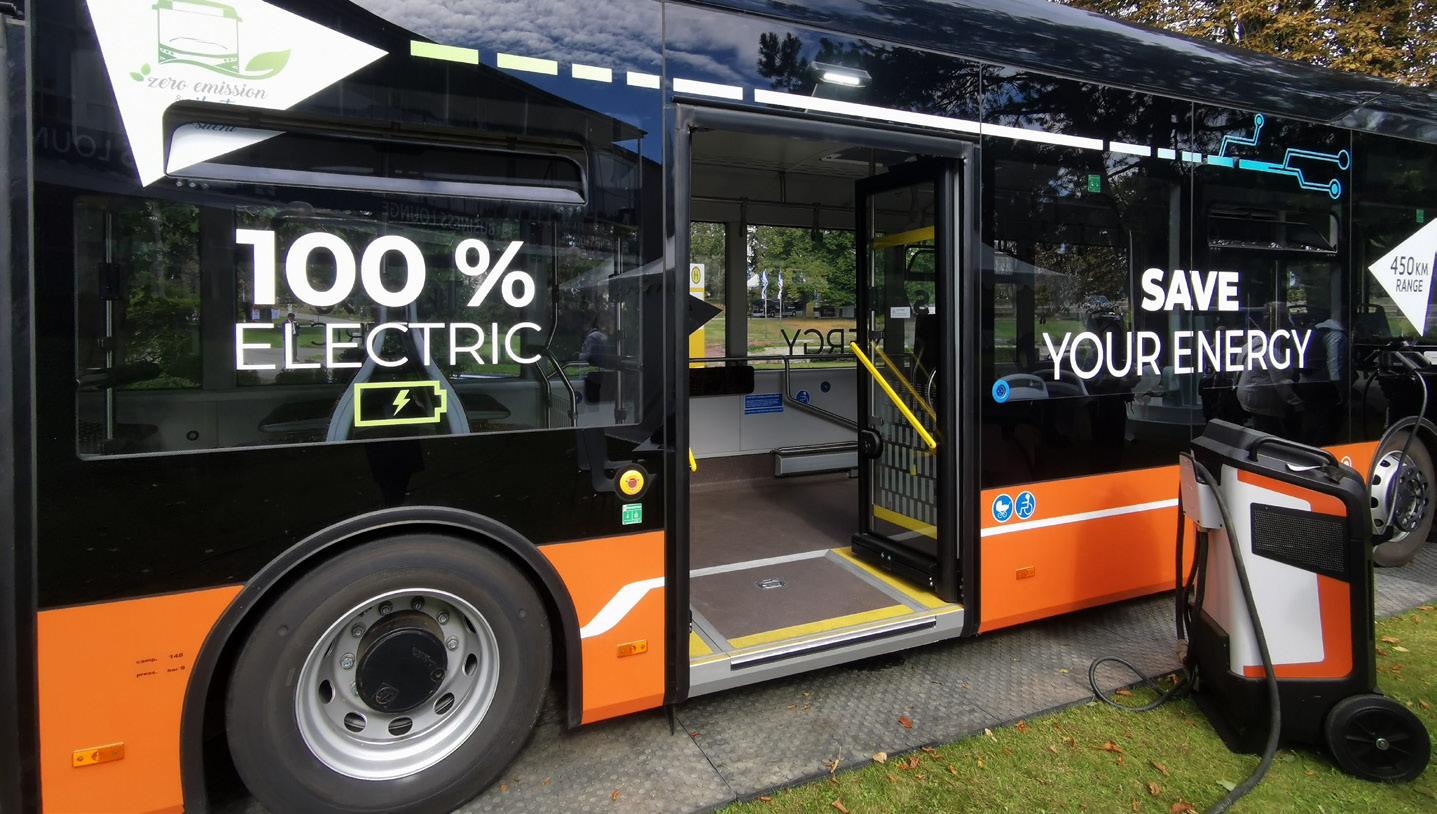
During the World Bus Forum, HÜBNER Gruppe unveiled its 6-axle, electronically-powered multi-steering system which enables buses of lengths up to 36 metres to navigate tight turns and roundabouts in urban areas. A bus of this length would be able to carry around 300 passengers, thus offering a capacity similar to that of a tram. For high-demand routes, this solution would allow a single driver and vehicle to transport a greater number of passengers.

Although models such as Volvo’s 30-metre Gran Artic 300 can already provide a similar capacity,
buses of this length are currently restricted to primarily straight routes and are not compatible with most inner-city environments. Stefanie Böge, Project Developer at HÜBNER Gruppe stated that HÜBNER’s latest steering system was ideal for urban networks that could not keep up with capacity demand. Otherwise, squeezing more passengers into crowded vehicles would simply discourage people from using public transport and would cause delays when people tried to board and alight.
However, Böge also said that this solution was not an attempt to replace existing systems such as trams. Instead, larger buses could provide a complementary or transition alternative for rail services. Indeed, Anna-Theresa,
Managing Director of Hamburger Verkehrsverbund (HVV), welcomed the idea of larger buses, as Hamburg’s ongoing work to expand the capacity of its underground system will take many years, while passenger demand continues to increase by 7 to 8 percent each year.
Although Dr Rolf Erfurt highlighted that 36-metre buses would require a special licence and may require infrastructure changes, such as extended bus stops, these adaptations remained significantly cheaper and faster to implement than rail alternatives. Böge added that for some cities wishing to extend their tram lines, larger tramlike buses on rubber wheels could be a more convenient addition.
By presenting both big and small buses for the future, InnoTrans 2022 highlighted the ongoing potential for such vehicles to enhance rural and urban transport networks. As zero exhaust emission technologies continue to develop and autonomous and larger vehicles are rolled out, buses continue to contribute towards a more sustainable transportation future.
Karsan’s autonomous e-ATAK is 100% electric and is already operational in the US and Europe © a2b Global Media HÜBNER presented its new steering system for high-capacity buses live at the outdoor area of InnoTrans 2022 © HÜBNER Gruppe


Both city buses and intercity buses are optimised to meet two main requirements: high transport capacity and fast passenger transfer. This makes wide entry and exit doors essential. Products from MAFELEC and TSL-ESCHA help passengers get on and off the bus smoothly. Push buttons in the door

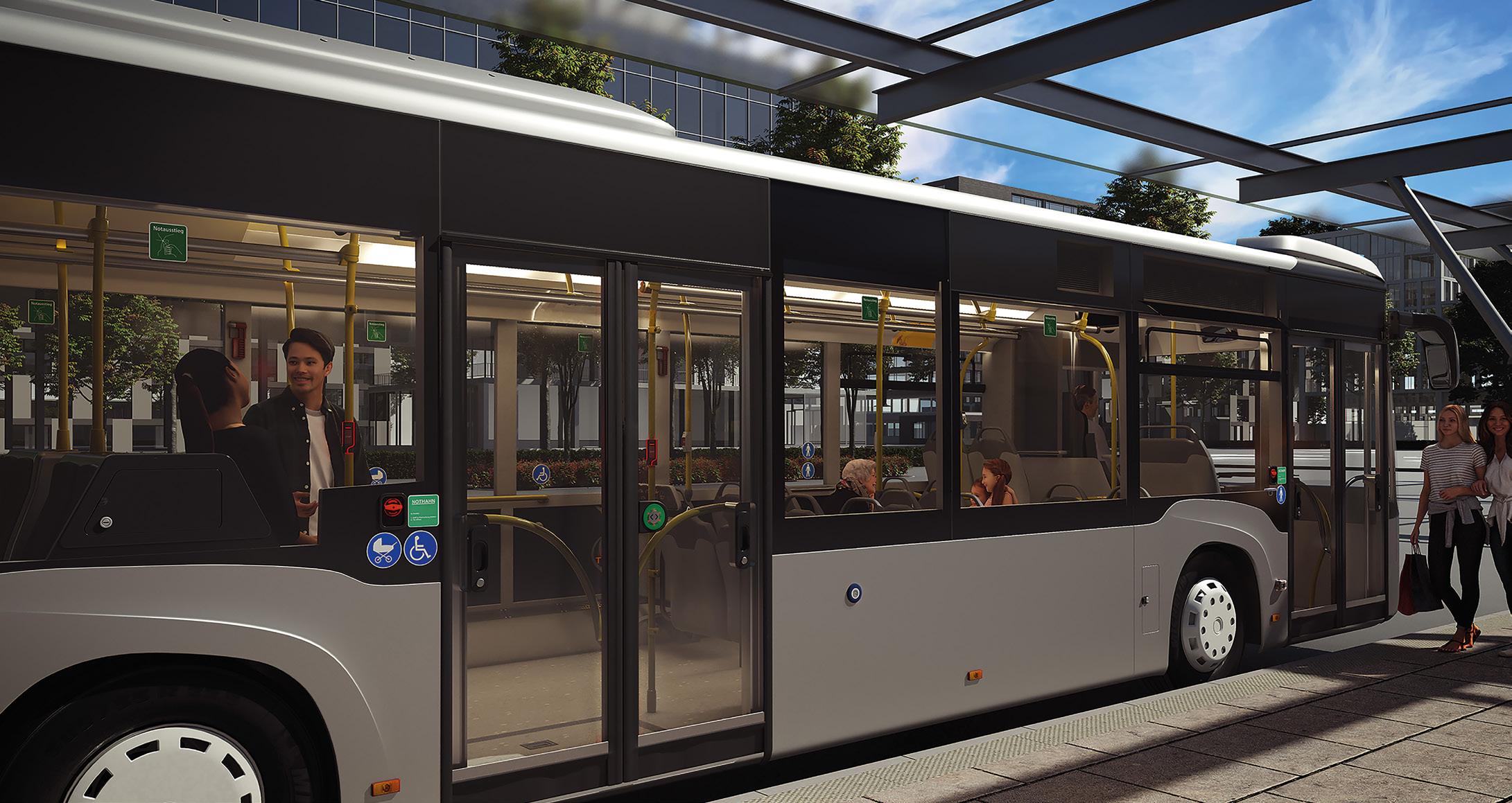
area on the outside of the bus help passengers open the doors and meet the normative requirements for handicapped passengers. Braille and tactile pictograms are available. All products are offered in a wide variety of colours and pictograms.
The interior of a bus is designed to be as functional as possible. Push buttons are mounted on numerous handrails, helping passengers signal a stop request. This makes the
passengers’ ride as comfortable as possible. For bus interiors, MAFELEC and TSL-ESCHA offer user-friendly components such as push buttons, handrail buttons, door control units and LED signal lights. They help passengers board and disembark in greater comfort and safety. The stop request buttons, e.g. the HST series by TSL-ESCHA and the M360 series by MAFELEC, give you a very durable product to use in your vehicle, as underlying inscriptions
 Push buttons in the door area on the outside of the bus help passengers open the doors and meet the normative requirements for handicapped passengers (Photo: TSL-ESCHA)
Push buttons in the door area on the outside of the bus help passengers open the doors and meet the normative requirements for handicapped passengers (Photo: TSL-ESCHA)
and pictograms are protected by scratch-resistant polyamide. This ensures that the push buttons always look good.
The PK push button series has been in reliable and proven use in buses and trains for decades. Now the glass mounting variant has a modern and optimised design for installation in the glass. The new spacer ring is now restrained and therefore adapts perfectly to the door design. The plastic housing, which meets the increased fire protection requirements, is uniformly black. This increases the contrast of the push button to the mounting surface. The door opening push button is thus much better accentuated and stands more in the foreground. Indoor and outdoor push buttons now have a consistent design. The mounting ring can be selected from the usual wide range of colour variants.
The special feature: thanks to the movable cable cover, the new spacer ring can be easily adapted to different door profiles and thus compensate for tolerances
and gaps. The cable covers are available for five different angles for adaptation to the respective door profiles.
The new spacer ring for the PK is compatible with the one for the PK52 push button series. The PKM indicator light and the PKW buzzer have a similar construction to the PK push button series and can also be used for single and double-sided installation in glass doors with the new spacer ring.
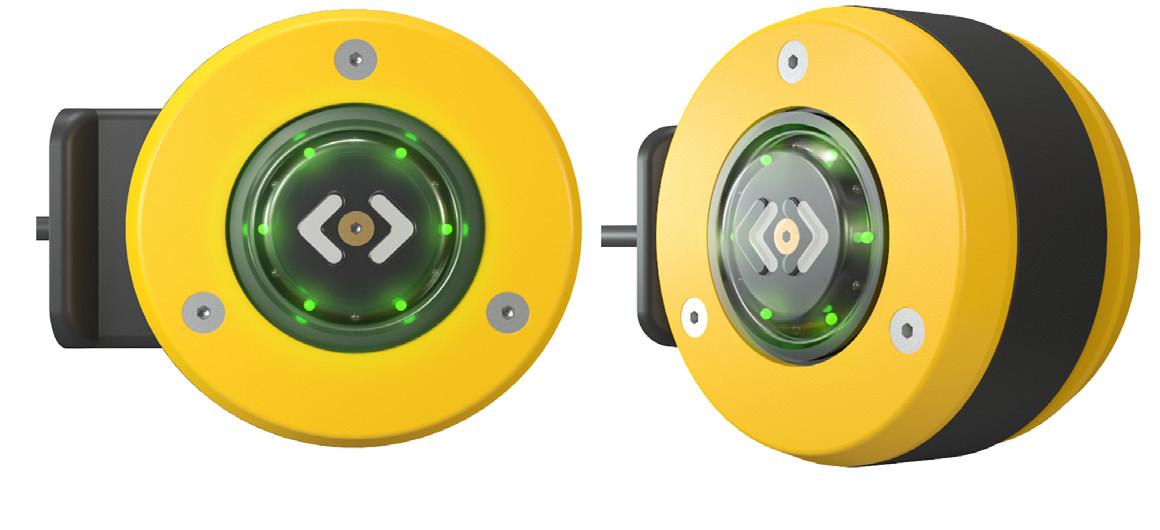
Whether push buttons, handrail buttons, sounders, LED signal lights or door indicator lights – passenger comfort and safety are constantly being enhanced through further development of the products.

TSL stands for Touch, Signal and Light. TSL-ESCHA develops, manufactures and distributes individual customer solutions for
public transportation and robust LED lighting for industry. Door opening push buttons, signal lights, sounders, indicator and display devices as well as LED lighting are part of the product portfolio and meet TSI-PRM standards for bus, trains and emergency vehicles. TSLESCHA, located in Halver (Germany), is part of the MAFELEC TEAM. The French group of companies is active in the markets of bus and railway, industrial vehicles, industry, energy, defence, aerospace and elevators.
TSL-ESCHA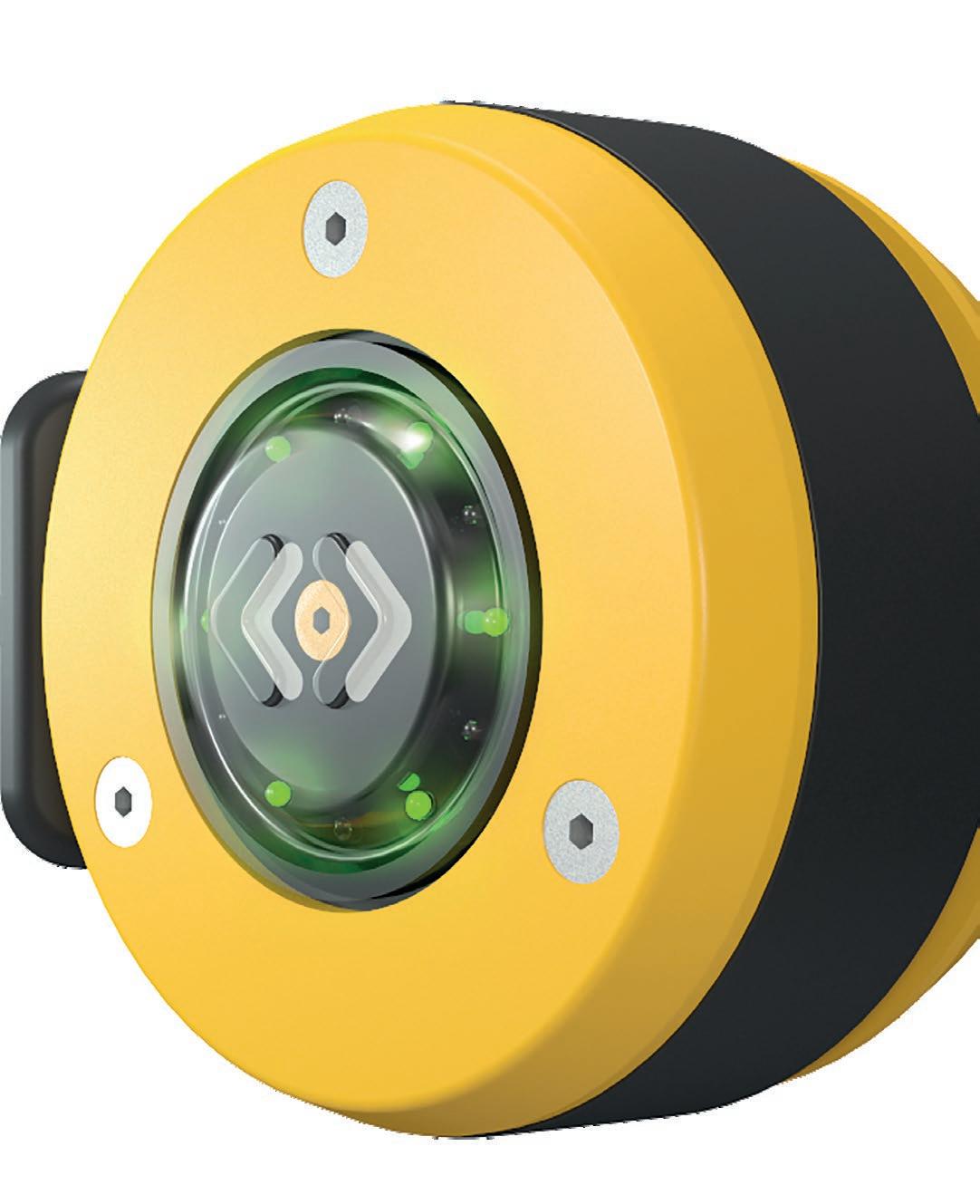

Masats is an international referent in public transport accessibility systems, including passenger doors and accessibility systems for people with special needs.
With more than 50 years of experience supplying electric and pneumatic door systems to the bus and coach industry in addition to access ramps and lifts for PRM, Masats began supplying products
for the railway sector in 2008.
In 2016, Masats launched a new division with products for station infrastructure: platform screen doors and gap fillers for stations. In 2021 Masats developed its first platform door project on TMB’s L4/ L11 in Barcelona.
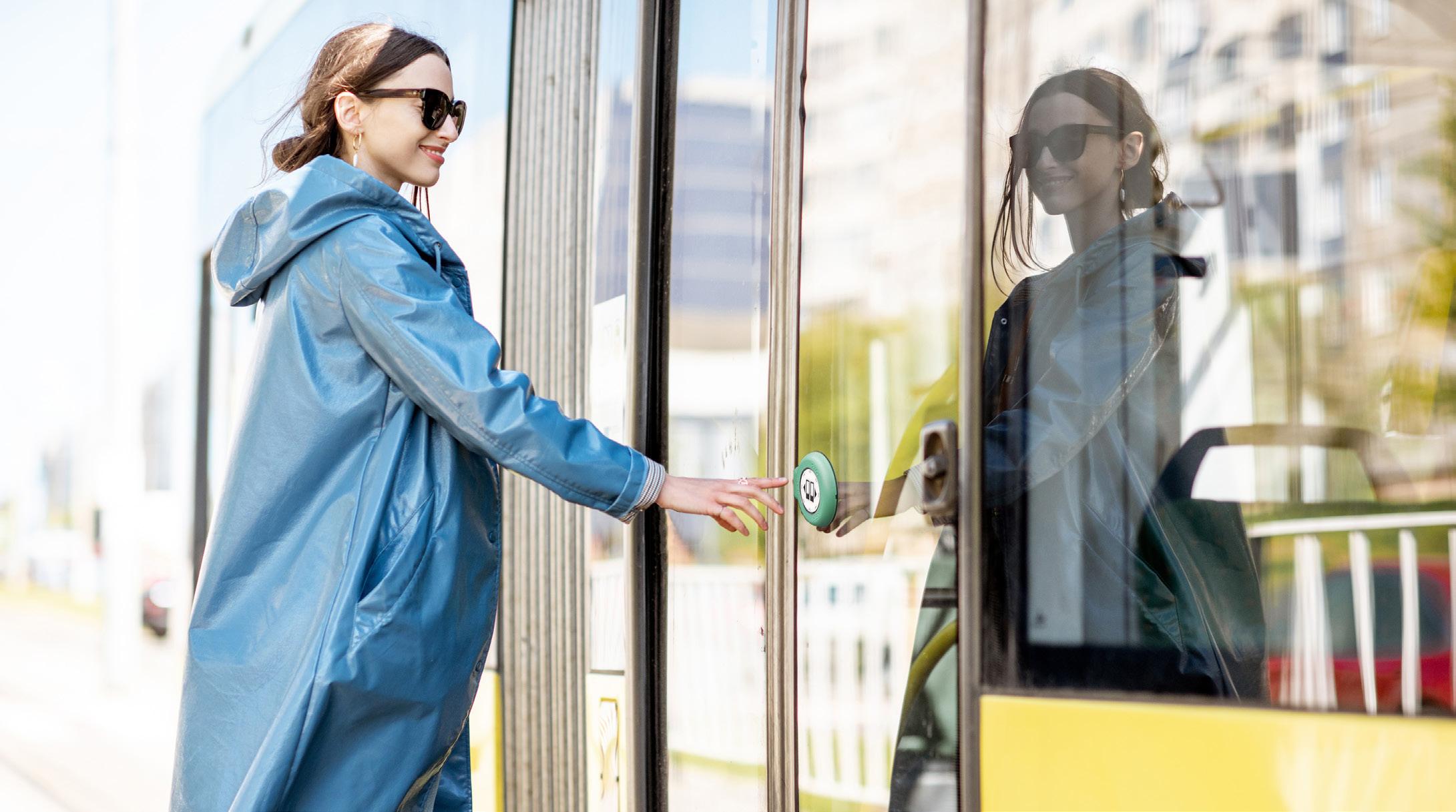
Masats creates products that enhance people’s quality of life through better mobility, always giving priority to reliability, safety and maintainability. Therefore, all products are designed with the latest generation technology


and Masats is always investing in innovation and adding value to strategic projects, such as the latest predictive maintenance solutions for transport accessibility systems (bus and train doors and also ramps). The aim is to predict anomalies before they occur, thus increasing vehicle availability.
Sustainability is also a key issue for Masats, so the new systems aim to reduce their weight, which also helps to reduce vehicle fuel consumption, generating less waste at the end of the life-cycle.
 028c sliding door
028c sliding door
KS7 lift
Masats supplies products worldwide from its headquarters near Barcelona and to the North American market from its US-based plant. Its product range includes pneumatic and electric doors and accessibility systems.
The electric sliding door 028c with a worldwide presence, stands out for its smooth movement, perfect sealing, noise reduction and enhanced performance. Following this concept, the sliding door range is completed by the sliding door 028a for minibuses and also the single-leaf sliding door 028b. And the new electric sliding door 028d SLIM completes the next-generation Masats urban product range. It’s a very compact low-height (153mm) mechanism which is ideal for vehicles with little clearance at the top for easy access to the engine and maintenance.
Regarding the Masats inwardswinging doors, the 029g door
is valued for the softness of its movement, its integration in the vehicle and speed of assembly. And the last product launch was the 029i which is the revolution of the inward-swinging doors. Our fastest, smoothest and safest door with a new Masats electronic control EVOLUTION developed to offer maximum reliability and added value to the operator and high level of auto diagnosis. The system is prepared for predictive maintenance.
Another product for the coach segment is the Swyncro and 014-015 outward-swinging doors. Swyncro is an important evolution in door opening systems. The smooth movement, completely horizontal without wedges or stabiliser bars, enables a perfect seal and the elimination of rolling noises, increasing the comfort of passengers and drivers.
for buses and coaches, such as its well-known electric telescopic ramp RT1, the manual ramp RM2 and the electric ramp RE1.
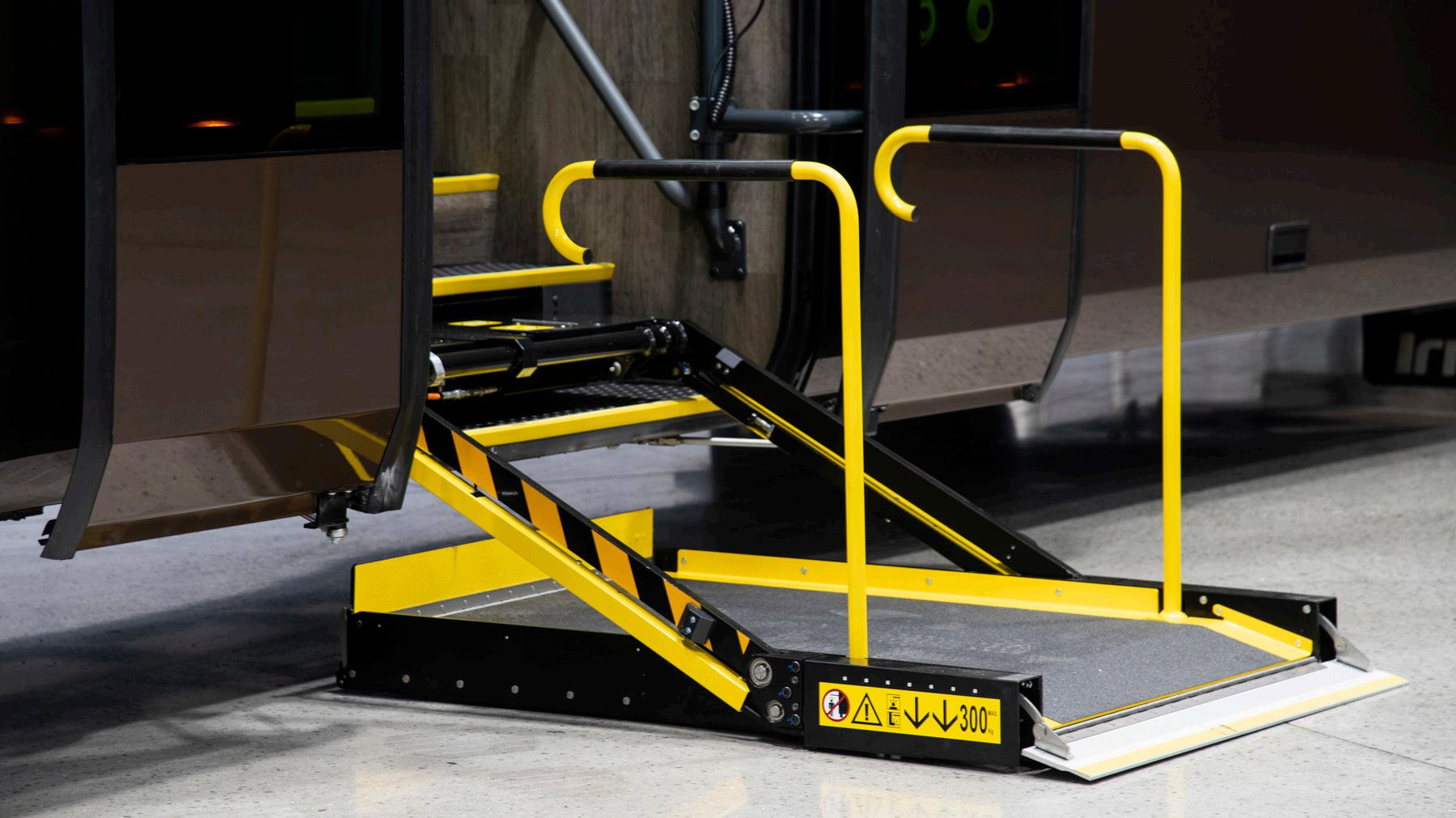
The range of lifts for coaches includes the KS7 lift range, with different configurations that can be installed in stairs or a dedicated door, and the KV5 vertical lift. We offer a complete ramp and door solution which provides a comfortable and safe entry system for passengers with special needs.
The company designs its own electronics ECU, according to the latest ISO 26262.
The products have evolved towards more digitised systems, with a high level of maintainability and safety, and which provide greater vehicle availability, thanks to their new Evolution electronics, prepared for predictive maintenance.
Years ago Masats took the
strategic decision to develop a specific product range for the railway sector. More recently, we have incorporated platform door systems, which are installed in the fixed infrastructure of the station, such as the PSD platform doors or the gap filler. An important milestone for the company was the first installation of PSD platform doors for Line 11 of the Barcelona Metro in September 2021. The platform doors improve station safety, improve service, optimise air quality and air conditioning in the station. Its lighting portal provides passengers with information on the position and operational status of the doors and minimises delays. A high-tech project with a lot of prospects for the future of the company.
Regarding the accessibility systems for railway vehicles, Sliding Plug
doors for EMUs or light rail vehicles are a robust and reliable system. The door has been designed to reduce the product life-cycle costs and for a safer and better passenger experience.
The new RF3+ contactless step ramp is a multi-use access device: ramp, step or gap filler for safe and functional passenger transit. It features a contactless platform detection system and automatically detects the platform position with respect to the train and deploys as a ramp or step as needed. It also adapts to the necessary length.
ThyraLink Communication System: Thyralink establishes direct communication between train doors and platform doors for open on-demand operation. This improves the sustainability of climate control at the station
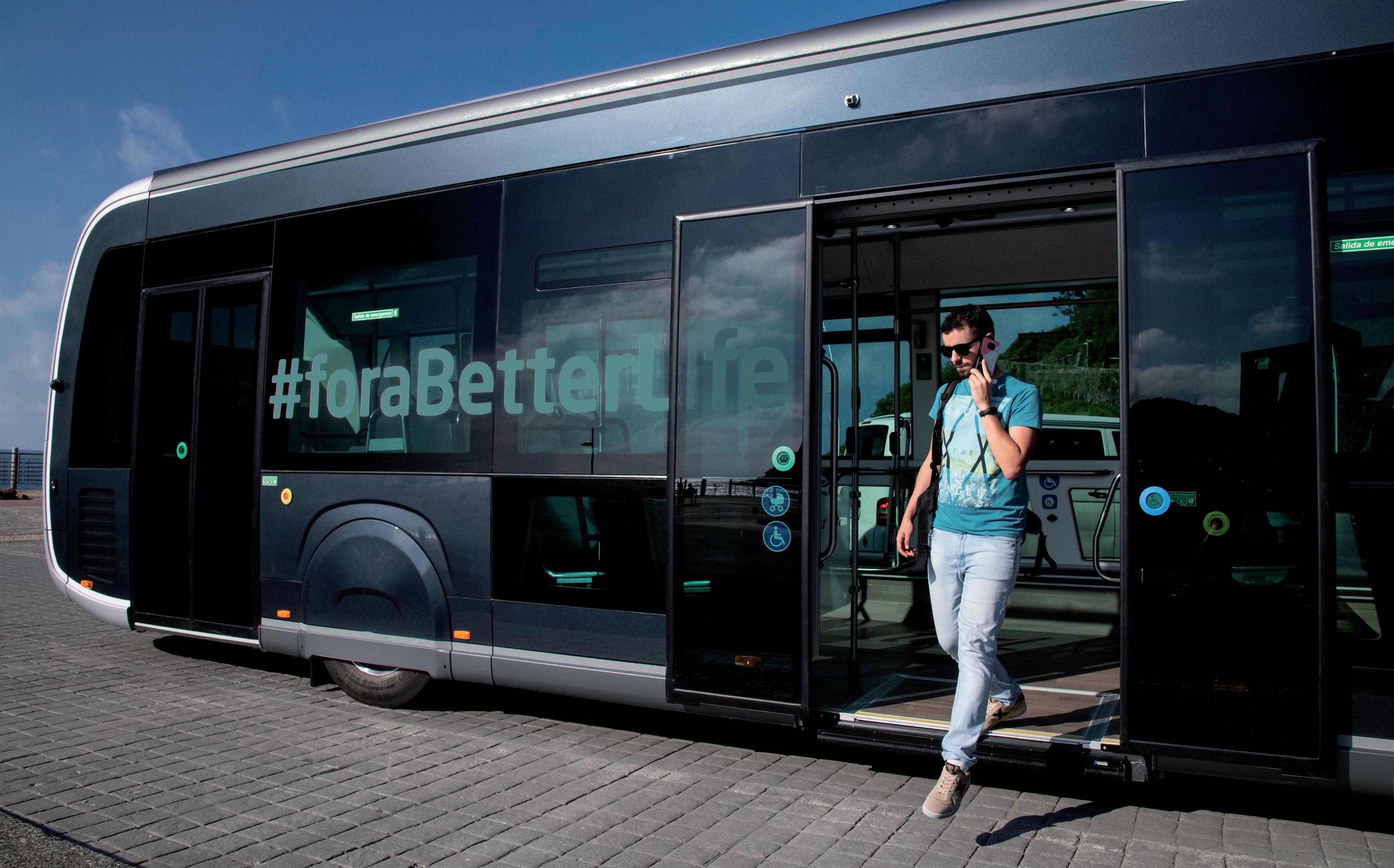
and on the train. The system can replicate the door status among each of them.
Masats is an international benchmark in accessibility systems for public transport, including access doors and ramps or lifts for people with reduced mobility for both buses and trains. It is also active in the infrastructure sector, improving passenger safety and mobility with platform systems, such as platform screen doors. From its plant in S. Salvador de Guardiola (Barcelona), where more than 300 people work, and with a production subsidiary in Kennesaw (USA), it exports to more than 45 countries.


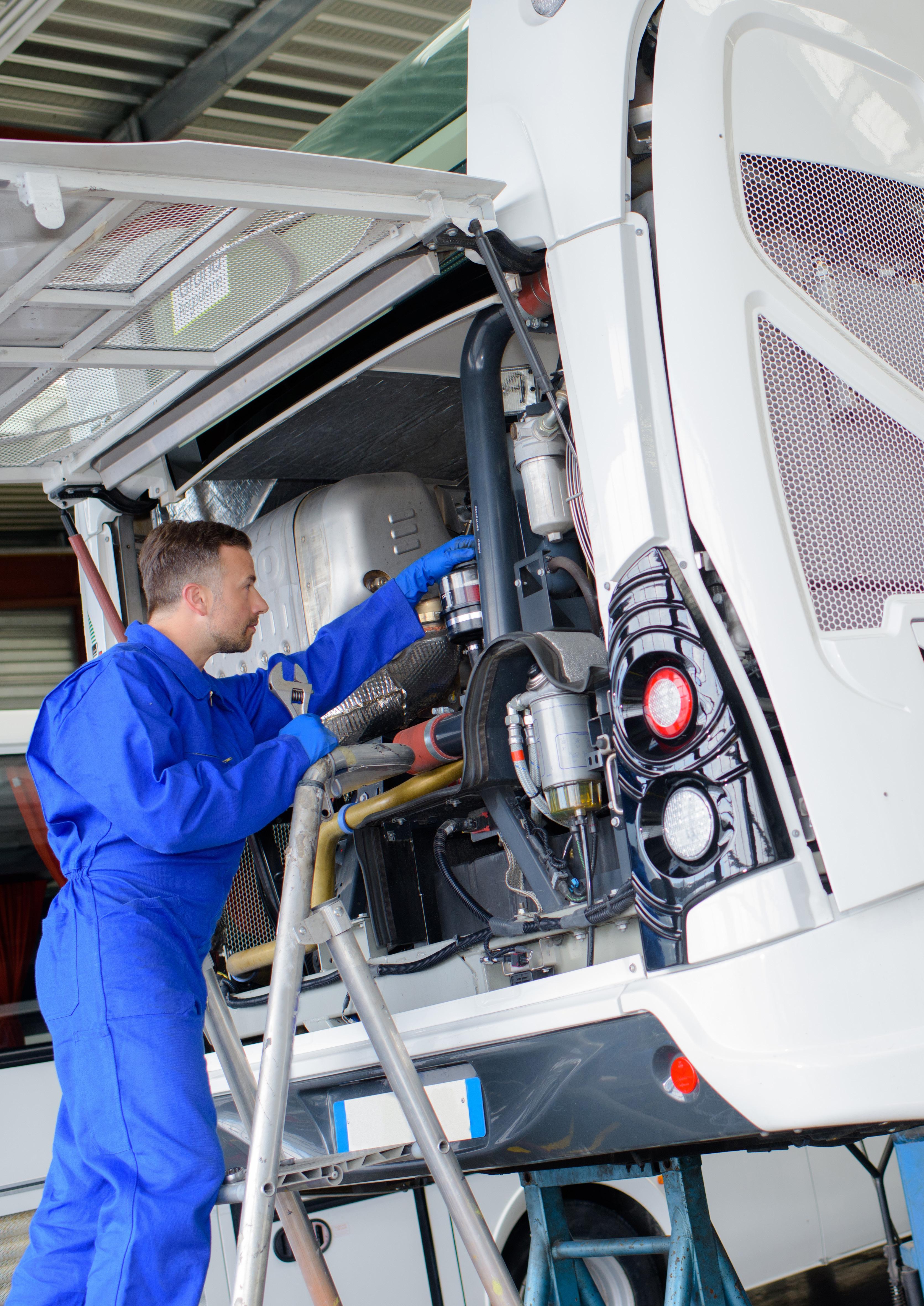


Pfaff Verkehrstechnik is increasingly supplying its recently launched access platforms for bus roof maintenance to municipal bus operators throughout Europe, for example, as far away as Norrköping, a Swedish city in the province of Östergötland.
The roof-working platforms recently installed there are used to carry out maintenance and repair work safely and efficiently on the roofs and windows of the municipal bus operator’s vehicles. Pfaff Verkehrstechnik

has already delivered several such systems to Swedish companies as Sweden is one of the pioneers in electromobility, and the electrically powered buses frequently used there require more maintenance than diesel-powered buses.
In principle, Pfaff Verkehrstechnik can flexibly adapt its newly designed access platforms to any bus fleet thanks to different segment lengths based on the modular principle, regardless of whether they are simple 12m
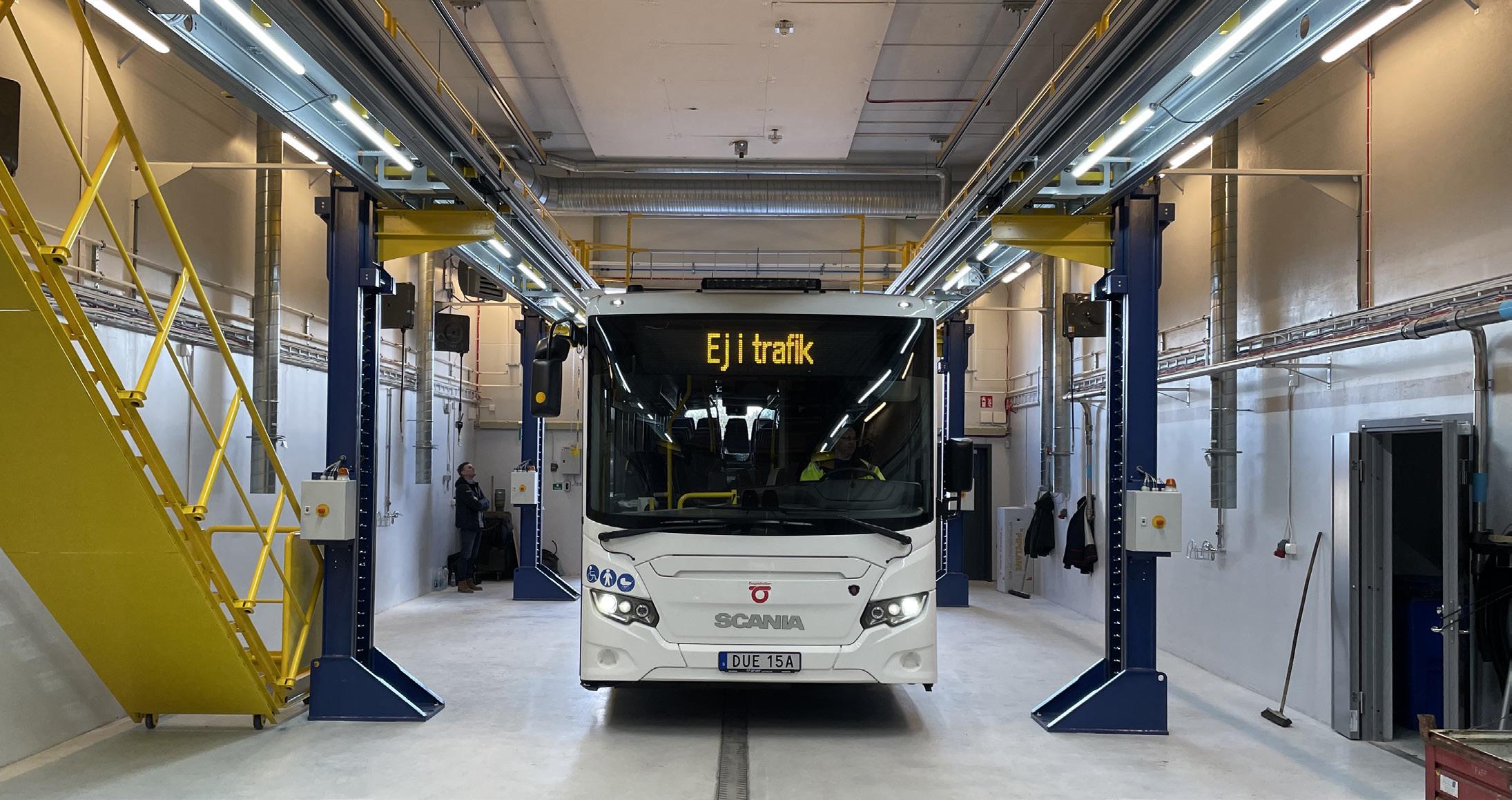 Bus access platforms from Pfaff Verkehrstechnik facilitate maintenance and servicing work on buses
Bus access platforms from Pfaff Verkehrstechnik facilitate maintenance and servicing work on buses
buses, double-decker buses or 18m articulated buses. The bus company in Norrköping now uses two connected, individually extendable access platforms, each 9.6m long, on three lifting jacks on each side of the vehicle for maintenance on both sides of the bus. This ensures that for an overall vehicle length of almost 20m, there is a continuously accessible walkway at the height of the windows all the way up to the roof of the vehicle. Workers can move freely and safely over the entire walkway width of 755mm.

The platform combinations can be adjusted in height as required. For this purpose, three stationary lifting jacks are firmly mounted on each side on the workshop floor. This structure supports the two working platforms with two electrically driven extension modules, which extend 500mm within 40 seconds and thus connect seamlessly to the bus. They form a continuously accessible walkway at the desired height and ensure flexible working from the windows to the roof in the range from 1,000mm to 3,900mm. In addition, an accessible bridge with a maximum clearance of 3,270mm can be attached to the opposite platforms in front of and behind the bus in order to work on the front or rear window of the vehicle or to get from one side of the vehicle to the other.
Access is via stairs with heightvariable steps and a secure access gate at the side of the system. An adjustable railing at the front and rear provides ergonomic all-round fall protection in the complete
 There are two extendable access platforms on three lifting jacks on each side of the bus
There are two extendable access platforms on three lifting jacks on each side of the bus
The environmentally-minded country of Sweden is considered a pioneer in the growing electromobility market. In contrast to conventional buses, which run on diesel and require hardly any work on the roof, electric buses require more maintenance work on the roof, as the electrics and heavy technical components, such as battery packs, as well as fuse boxes, inverters and air conditioning systems, are located there for the sake of comfort. These components require regular maintenance. Due to the rounded plastic roofs, there are special hazards and challenges for the maintenance crew. The new
roof-working platforms from Pfaff Verkehrstechnik ensure maximum safety and ergonomics for all bus variants – maintenance workers feel as safe on them as they do on the ground.

Thanks to the new solution from Pfaff Verkehrstechnik, municipal bus operators can ensure safe working conditions even with mixed fleets of diesel, hybrid and electric buses, without damaging the vehicles with improvised safety measures. The flexibly adaptable roof-working platforms set high safety standards, by minimising hazardous areas where people could fall and providing all-around ergonomic access to the vehicle roof. They provide fleet operators with modern, safe and reliable mobility. Due to short set-up times,
the vehicles are quickly ready for operation again, and their operating times in transport use are extended.
For more information on Pfaff Verkehrstechnik and the products click here.

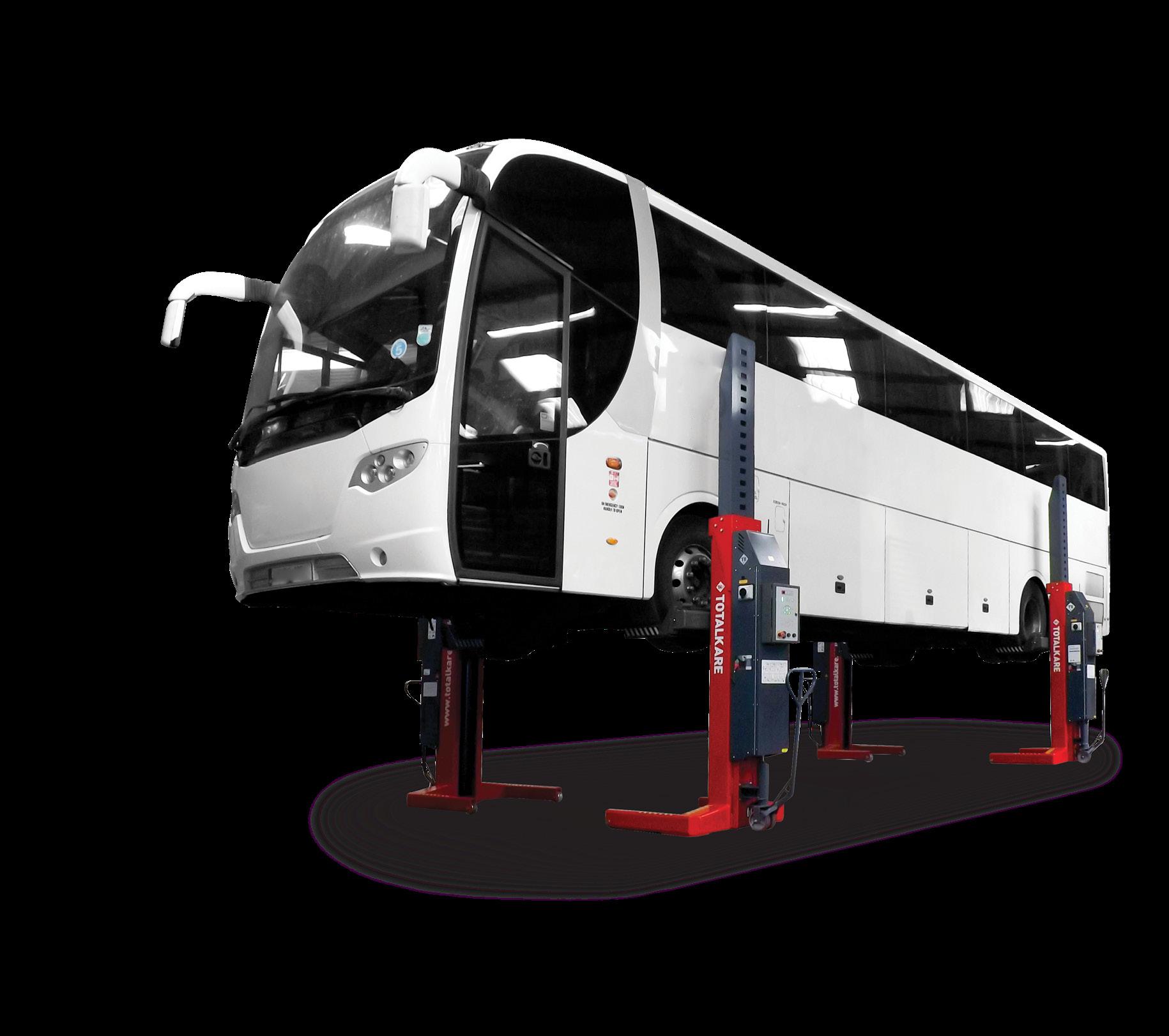




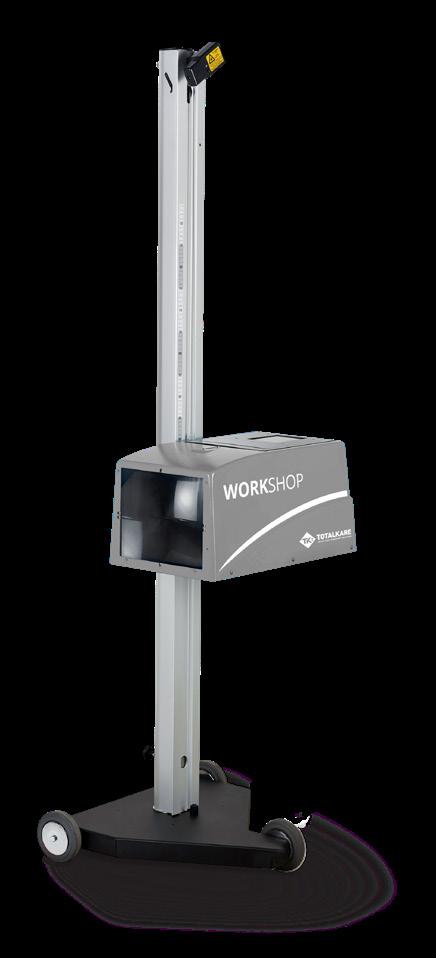
G & C A Lombardo has upgraded its facilities and increased capacity after taking a set of mobile column lifts and a mobile brake tester from Totalkare.
A family-run business providing HGV garage services, vehicle repairs, roadside recovery and services for LGVs, HGVs, buses and other commercial vehicles, G & C A Lombardo also offers specific roller-brake testing services, testing fleets to ensure they meet legal requirements, providing brake certificates and reducing the chance of costly failed MOTs.
Although the Cambridge-based company has been operating with one in-ground brake tester, it had been consistently reaching 90% capacity, bottle-necking the busy workshop. The introduction of a second brake tester will add the capacity needed. The DVSAapproved mobile brake tester from Totalkare comes with single or bi-directional rollers, automatic axle weighing and optional axle load simulation – an essential factor.

Furthermore, its manoeuvrability around the workshop and ability to be deployed outdoors – even on uneven ground – makes it a truly flexible option for workshops testing or looking to test in-house. Carrying numerous brake testers in stock, Totalkare could quickly deliver and commission the mobile brake tester.
This latest purchase follows an earlier purchase from Totalkare in late 2021, when G & C A Lombardo upgraded its legacy-model Totalkare column lifts to a brandnew set of T8DC cable-free mobile column lifts. The upgrade means the business can now lift a wider variety of vehicles owing to the T8DC’s increased capacity and its adjustable forks that accommodate
different wheel diameters. The mobile nature of the lifts also maximises space within a workshop. Totalkare offers a flexible finance option through its partner PMD Finance, allowing customers to spread the cost through easy-tomanage payments.
Shaun Lombardo, Workshop Manager of G & C A Lombardo, commented: “Since upgrading the mobile column lifts, the March workshop has experienced an increase in productivity and capacity.I am sure the new mobile brake tester will continue this trend and make it easier for the engineers to keep up with the current high demand for brake testing services.”
Area Sales Manager for Totalkare
 Totalkare mobile brake tester in use at G & C A Lombardo
Totalkare mobile brake tester in use at G & C A Lombardo
Jack Longstaff said: “We are glad that G & C A Lombardo chose to upgrade to our latest mobile column lift technology.They are a long-term customer and when the requirement for a new brake tester presented itself,they had confidence in the quality of product and service provided by Totalkare.”
A Devonshire-based family-run coach company has improved its in-house workshop facility with the addition of a set of mobile column lifts from workshop equipment specialist Totalkare.

Taw & Torridge owns and manages a fleet of 75 executive coaches, minibuses and multi-purpose vehicles, all maintained by its qualified in-house engineers. To support ongoing fleet maintenance, the coach operator has invested in a set of six of Totalkare’s T8DC mobile column lifts, which complement an existing set previously purchased from the West Midlands-based supplier. The cable-free, heavy-duty lifts can lift 7,500kg per column and are easy to use in configurations of 4, 6 or 8. The hydraulic mobile column lifts are designed to be easily manoeuvred around a busy workshop and are an ideal option for fleets containing vehicles of varying sizes such as coaches and minibuses.
The T8DC is charged from a 230V wall socket with a large number of lifting cycles between charges. The radio synchronisation between columns eliminates the interconnecting cables – reducing the chance of dangerous slips, trips and falls.
Taw & Torridge will be able to combine the new T8DCs with its existing set to expand its lifting options and capabilities. The new investment will ensure that the fleet can be maintained to a high standard and continue to drive within London’s Low Emission Zone.
Mark Hunt, Director of Taw & Torridge, said: “It is important our vehicles are always roadworthy and run efficiently to keep emissions as low as possible.We are familiar with the benefits offered by Totalkare’s mobile column lifts and anticipate the additional set will help us to maintain our excellent MOT pass rate and minimise the need for major repair work.”
John Ray, Area Sales Manager at Totalkare, commented: “Taw & Torridge can expect an immediate increase in efficiency in its busy in-house workshop as they can

service twin, tri-axle or even four-axle vehicles with our T8DC mobile column lifts.They are a flexible alternative to fixed lifts or outsourcing work,resulting in significant time and cost savings over time.”
Click here for more information on mobile brake testers from Totalkare.


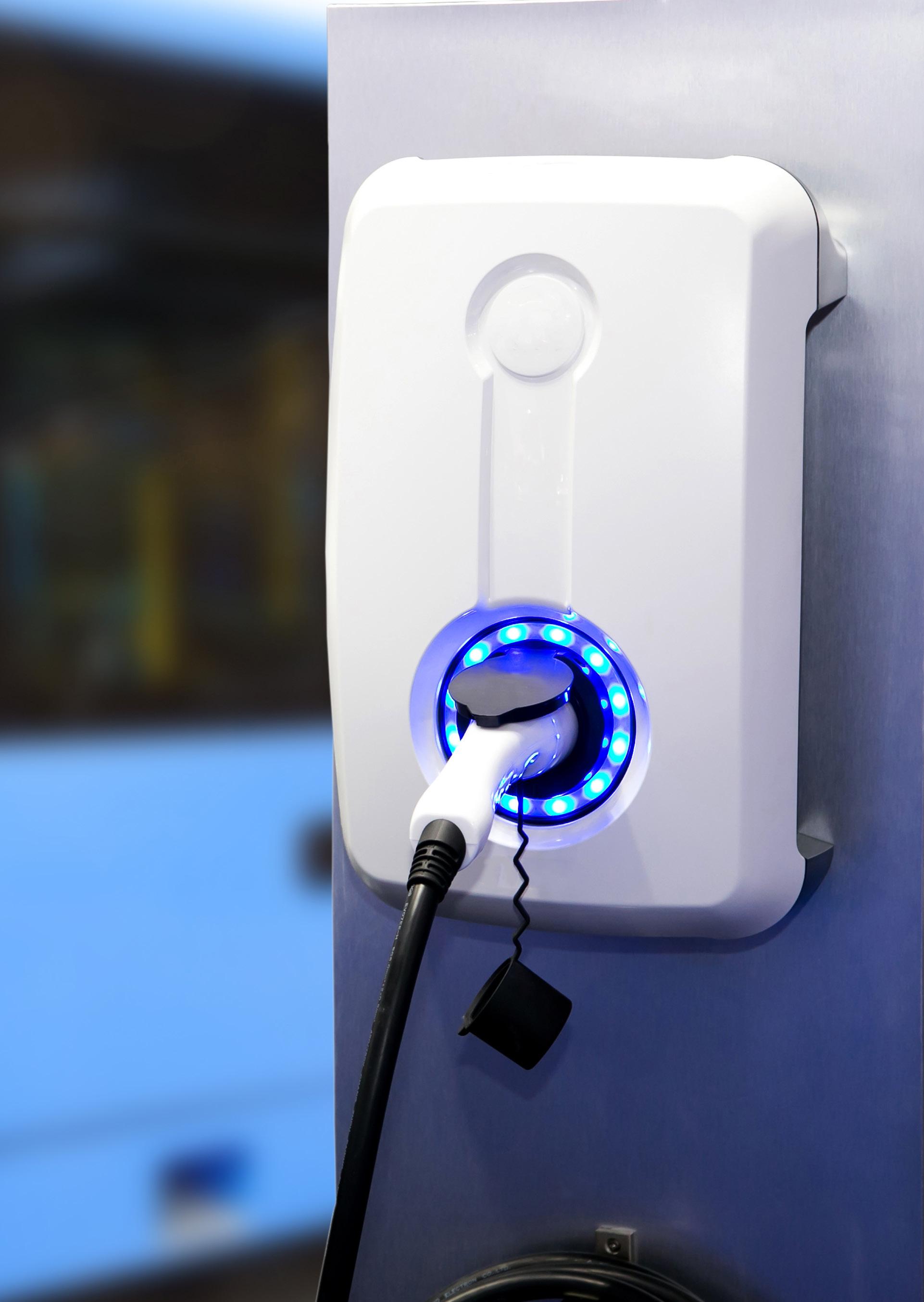



ZF’s new Commercial Vehicle Solutions (CVS) division has sent a clear message of support to city bus and coach manufacturers as well as fleet operators worldwide with its expanding suite of advanced systems and solutions.
In addition to setting a new industry benchmark in bus transmission system performance and efficiency with the unveiling of EcoLife Coachline, ZF’s expanded
technology portfolio delivers significant advantages for all types of coach applications. Leveraging the synergies and enhanced capabilities of CVS, ZF is meeting the current safety and efficiency needs of coaches while bringing the sector’s autonomous, connected and electric future ever closer.
ZF’s Commercial Vehicle Solutions (CVS) division has set a new industry benchmark in coach transmission system performance and efficiency
with the recent unveiling of EcoLife CoachLine. The second generation of its proven six-speed automatic transmission, EcoLife CoachLine is suitable for coach applications, whether operating in a city, inter-city or even a challenging, steep mountain track. It offers advantages for customers including outstanding passenger comfort and significant fuel savings of up to three percent, compared to the previous generation.
“Environmentally and economically smart, EcoLife CoachLine sets a new standard of transmission performance,efficiency and


driving comfort for even the most demanding coach applications,from city streets to mountain roads,” said Dr Jochen Witzig who is responsible for transmission systems at ZF’s Commercial Vehicle Solutions division.
“Given the continued predominance of traditionally internal combustion engine powered buses in public transport and long-distance travel world-wide, it is vital that we focus on delivering ever-higher levels of fuel efficiency to help reduce emissions. EcoLife achieves this and so much more,” added Dr. Witzig.
Fuel savings of up to three percent over the previous generation EcoLife are possible thanks to EcoLife CoachLine’s innovative start/stop function which saves fuel during the entire transmission service life.
The powershift transmission has an optimal gear ratio spread, from 3.36 to 0.59. This is powerfully combined with a particularly high level of
mechanical efficiency, ensuring that the vehicle always operates in the optimum engine speed range.
Further enhancing driver comfort, effortless gear shifting has been enabled using ZF’s TopoDyn Life software controls. Using driving resistance-dependent shift controls, the programme ensures the right gear is always selected as the topography changes. The hydrodynamic torque converter with standard torsional damper enables high input torques to be achieved at relatively low engine speeds. The key benefits of this include noise reduction as well as lowering fuel consumption.
An innovative, integrated primary retarder and dual cooling set-up enables the highest level of braking power to always be available – even at low speeds. The dual cooling system features a large retarder heat exchanger and an integrated transmission heat exchanger. This ensures longer retarder braking and greater retarder availability
– important features given that coaches frequently operate for longer periods on steep mountain tracks and over greater distances. Effectively reducing the strain on the vehicle’s service brakes and protecting against overheating, the dual cooling system also extends oil change intervals by up to 480,000km. Overall, the numerous improvements lead to higher energy efficiency, CO2 reduction and improved TCO.
Additionally, EcoLife CoachLine increases the digitalisation of servicing and maintenance to help not simply predict breakdowns but to prevent them from happening. Providing predictive maintenance and preventive service packages, maintenance and repair costs are reduced, required work more easily planned and vehicle uptimes enhanced.
Taking its systems and components

expertise to the next level, ZF has developed its first Collision Mitigation System (CMS) specifically designed for city buses. The pioneering system offers active braking to help avoid frontal collisions with other road users, including vehicles, bicycles and pedestrians. The system also helps counter the adverse impact of braking momentum on passengers. Helping reduce the risk of accidents and injuries both inside and outside of the bus, the solution is the industry’s first original equipment manufacturer-independent CMS specifically engineered for city bus applications. The system is compatible with both electric and internal combustion engines. Having already secured business wins from leading bus OEMs, ZF will initially launch its City Bus CMS in Europe and, ultimately, plans to roll the system out worldwide.
“Leveraging ZF’s wide-ranging competencies to develop a pioneering solution connecting radar and camera with a central processing unit and braking system, City Bus CMS represents a clear proof point of the Group’s Next Generation Mobility strategy,”said Philipp Helmich,Head of Vehicle Dynamics Product Lines with ZF’s Commercial Vehicle Solutions division.“The system addresses the clear and pressing demand from manufacturers and their customers for ever-higher levels of safety in city traffic.”
“In addition to providing advanced, integrated safety for road users as well as the driver and passengers of both electric and traditionally fuelled buses,we are extending ZF’s advanced driver assistance systems leadership in trucks and coaches to the important city bus market

segment.Utilising advanced braking system technology is fundamentally important for safety and autonomous driving,with complex city bus applications providing an interesting and valuable use case,” added Helmich.
Offering significant value for OEMs and fleet customers, ZF’s city bus CMS represents a major step in enhancing bus safety for passengers and road users alike. Helping mitigate hazardous traffic situations in the complexity of an urban environment requires sophisticated situational analysis, including advanced object detection and classification. Building on ZF’s extensive safety systems expertise, ZF’s City Bus CMS draws on its latest OnGuardMAX technology for heavy trucks – with specific features and functionalities that are tailored to city bus applications. Combining the data from its state-of-the-art camera and radar provides continuous analysis of the traffic situation. If an impending collision is detected, the system can issue a forward collision warning (FCW) and automatically apply the brakes to help mitigate or avoid an accident.
Combined with ZF’s advanced braking capabilities that are precisely calibrated with the vehicle’s speed and weight,

the adverse effects of sudden braking on passengers can also be minimised. With seamless interaction between ZF’s ADAS and braking system, brake pressure is carefully applied across the braking cascade making passengers less likely to be jolted and put offbalance.
Successfully tried and tested by many manufacturers, ZF’s CeTrax is a purely electric central drive that can be used in buses. The system can also be integrated into existing vehicle concepts with a conventional driveline layout. This allows manufacturers to convert their model range to local zero emission propulsion without having to develop completely new platforms.

What type and brand of electric bus to choose is key when moving away from internal combustion power.
The bus fleet must meet criteria of autonomy, comfort and ergonomics that can be adapted as required to suit future requirements.

It is therefore relevant to include in this reflection charging station suppliers. Here’s what you need to know:
In most cases, electric buses are charged at the depot. However, if that isn’t sufficient to maintain vehicle autonomy, other solutions outside the depot can be considered.
When not in service, buses return to the depot. This might be a short stop to complete battery charging
(often during the day) or a longer break to allow a full recharge (usually at night).

The depot can be equipped with charging systems in the form of terminals or a gantry
During long breaks, buses can be recharged using an AC terminal (where the charger is carried on board). For more limited charging periods and where buses have highcapacity batteries, DC charging is
preferred as it delivers more current and therefore energy in a limited time.
DC chargers can charge one or two buses simultaneously. In this case, the power is adapted and distributed according to the needs of each bus. If the pedestrian crossing near the bus is to be freed up, the power electronics can be housed in a cabinet and only the gun(s) will be made available to the driver on a dedicated stand. These are the notions of proxi (proximity) or remote charging.
In this case, the gantry carries devices that connect to the roof of a bus. The main advantage is that the system can carry high DC power, allowing fast or even ultra-fast charging.
Drivers also do not have to handle the cables and connectors. They simply have to park the electric bus under the gantry. However, there are two disadvantages: the depot must be able to accept this type of structure and the bus must be equipped with the appropriate device on its roof.
There are two types of non-depot charging: end-of-journey charging and opportunity charging.
If the return journey is incompatible with the bus’s autonomy, it could make a top-up charge at the terminus first. Depending on the break time, a fast charge is carried out via a terminal or an ultra-fast charge via a pantograph. The size
of the installation (power of the charging point) will depend on the amount of energy to be produced in the time allowed.
A dome installed at the bus stop will allow the batteries to be recharged in a few minutes by connecting to the bus roof. This fits in well with the urban landscape, but the electrical distribution network near the stop has to have the necessary power.
The batteries on a bus will vary in capacity depending on the bus’s desired range.
To recharge a battery, it must either be supplied with more current in a limited time or with a limited current for a longer period. The aim is to give the bus sufficient autonomy for its next journey, i.e. to complete the battery charge to a sufficient level.
The maximum charging time available depends on the bus’s use schedule. The charging current must be adapted based on the available time. This will affect whether an AC charger or a DC charger is more suitable.
Ideally, a DC charger should be flexible throughout its life, being able to receive additional power modules for new types of battery later.
In a terminal format (proxi or remote), the gun and associated CCS socket limits the maximum current. For higher-power and ultrafast charging, domes or gantry and pantograph are preferred.
The bus, capacity of the onboard batteries and the route characteristics will determine estimated power consumption.
Together with the bus usage schedule the maximum charging time can then be calculated. This will inform the power of the charging station to guarantee the autonomy of the next journey.
In order for chargers to deliver energy to buses, they need to receive energy, meaning they must be connected to electrical infrastructure.
It may be relevant to monitor or control the chargers from the depot offices, to have them synchronise with the bus usage schedule and to co-ordinate with each other for smart charging. The chargers could send a message via the web when maintenance is required. It could therefore be necessary to connect them to the computer network.
Each terminal is supplied with low voltage via a protective circuit breaker.
The circuit breaker protects the terminal and its power cable; it can also integrate a measurement of the distributed energy or even communicate information via a
computer network. A low-voltage switchboard groups together all the circuit breakers and receives its energy from a delivery point of the national electricity network.
If the depot installation has many terminals or if high power levels are used, several switchboards and/or delivery stations may be necessary. The availability of electrical energy can also be secured by connecting each switchboard to two sources (e.g. national grid and site installations such as photovoltaic panels) or to a back-up unit.
In addition to the physical connection to the grid, the electricity supplier will be chosen according to various criteria. Being able to predict consumption and to modulate it as needed are assets for negotiating good purchasing conditions. The use of a smartcharging system can lead to rapid savings.
Each charging station has an integrated computer system to manage the exchanges between the vehicle and the station. This device makes it possible to identify the vehicle and modulate its charging needs. It may be appropriate to interconnect all these devices to allow dialogue and synchronisation with the depot’s activity management tools.
The charging stations, once connected, can be controlled by a smart-charging solution that will synchronise the charges according to the time the buses are stopped and their use schedule, thus optimising the site’s energy consumption. The smartcharging system interconnects
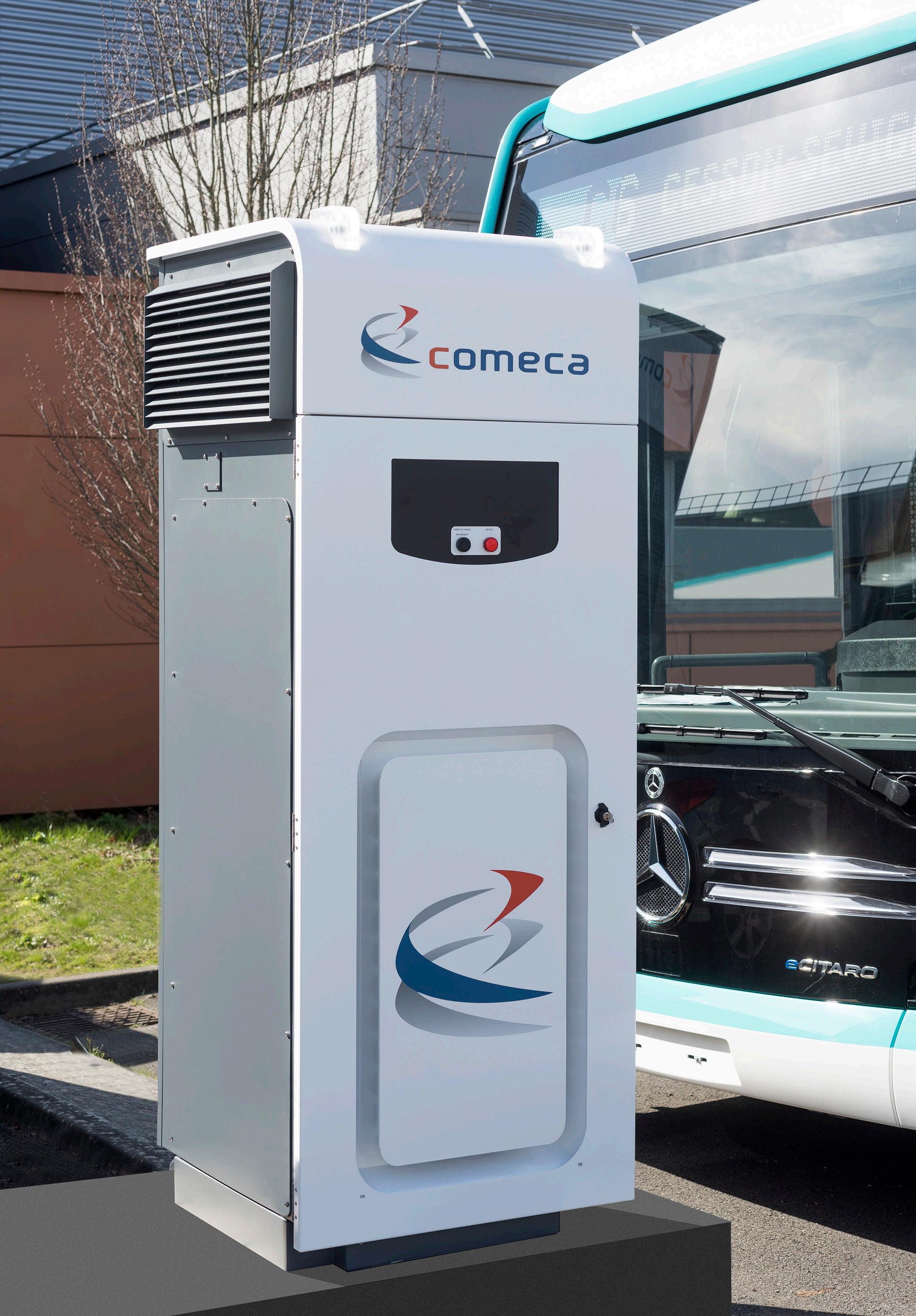
with the depot’s IT network and communicates with planning tools to take into account last-minute changes.
If a (secure) external link is set up, the terminals can transmit their operating information for analysis by a remote application. The compilation of this information will provide graphs, history, operating reports or periodic consumption reports. Each charging station could directly send a message to request preventive or curative maintenance. They can also send a message directly to a smartphone. The operator can then connect, via smartphone or tablet, to the supervision platform to have a complete and real-time overview of
the situation at the depot.
To summarise: in order to choose the right charging station for electric buses, the type of charging (at the depot or outside), the charging time, and the infrastructure upstream of the chargers all matter. There are many different charging solutions and some products perfectly complement the choice of bus type or provide the right solution for a particular line in an urban network.
It is therefore best to take into account both the bus manufacturer and the charging solution supplier when defining a strategy to incorporate electric buses.





The continual crisis in bus funding with passenger numbers only just returning to pre-pandemic levels means there is constant discussion of the role demand-responsive transport (DRT) can play in bus operations.
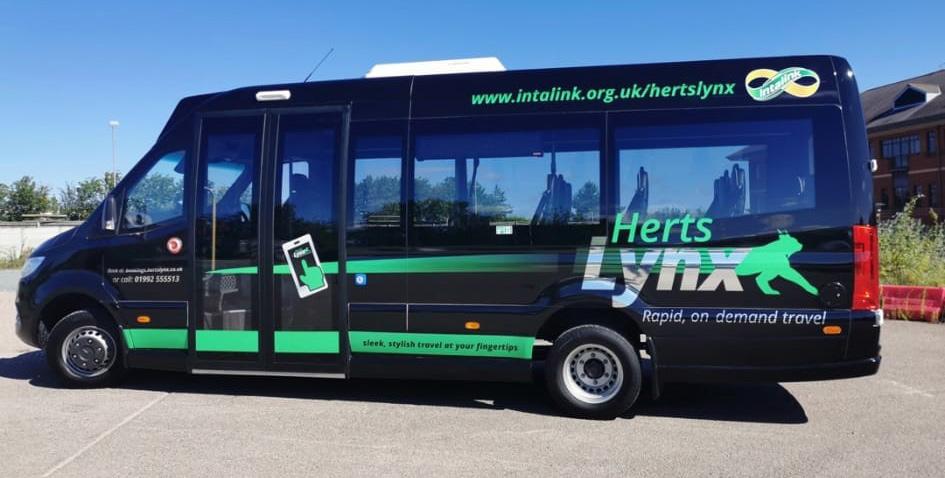
DRT has the potential to reduce costs and increase coverage. It could ensure that the network can be
maintained in areas experiencing difficulties (especially to ensure services at the beginning and end of the day). Equally, it could be used to expand services to improve coverage in poorly served areas in line with Bus Service Improvement Plans (BSIPs) as part of Enhanced Partnerships in England. As such, it could provide a lifeline to both passengers and operators.
So far, DRT has still not been widely used in the UK and understanding of how best to design services

is not yet widespread. However, Padam Mobility’s UK-based team, Jack Holland and James West, has possibly the most longstanding and broad experience of DRT in the country. They both have worked piloting the first DRT schemes for bus operators in the UK – as well as launching new services in Lincolnshire, Surrey, Leicester and Hertfordshire for Padam Mobility. This experience of working within the bus industry and understanding the business pressures it faces can really pay dividends.


Jack is a graduate of the Arriva General Management Graduate scheme where he learnt how to run a bus garage and gained his bus licence. From running bus depots in Buckinghamshire he joined the team that launched ArrivaClick in Sittingbourne.
“I’ve spent years managing bus depots looking at price elasticity, driving hours,managing overheads, marketing services and I have seen first-hand great routes that run at high frequencies and carry thousands of people every day.I’ve also seen underperforming routes – due to population density,town planning,socio-demographics and various other reasons. With the improvements to DRT software in the past few years,I believe some of these services could be run with fewer resources and serve their users in a much greater way.”
James spent two years on the RATP Dev UK Graduate Management Scheme and has worked across bus, tram and coach services. He moved from writing business plans and forecasts for commercial bus operators to becoming Operations Manager for Slide Bristol, before launching and managing Slide Ealing.
“Having managed DRT operations and the teams that help make them function every day,I understand the needs and challenges that define DRT versus those of a traditional fixed line bus.Through my experience in urban,suburban and rural routes, I can see and have seen how DRT can benefit suburban feeder services,whilst also allowing rural areas to offer an accessible transport option.I have also seen the flexibility that DRT can offer,and how constraints from fixed routes on service design can be removed to create a service that best fits the end user.
“DRT solutions have advanced hugely since I started in the sector and we must now use them to adapt our wider transport services to complement lower-frequency bus routes to make them better. In doing this,operators can help reutilise existing resources to increase their reach to users.”
Pranav has a background in transport, with a consultancy role in rail and public transport during his previous employment with the VINCI Group. He subsequently moved from an intermediary role to the DRT and mobility solutions sales division at Padam Mobility, where he currently oversees the Northern Europe and Scotland region.
In this new environment, data plays a much more important role. DRT services enable better insight into travel patterns and rapid changes to configuration.
“There is no magic bullet for bus services. However, what we need to be much better at is the use of data in the industry.For too long have we relied on historic data and routes. When I was a General Manager,many of the routes had stayed the same in terms of routing for decades or longer. Our environments are continually evolving with new developments and destinations.For example, town centres are no longer the key destinations that they used to be. Industrial estates and warehousing continue to be built in out of town,
Left: Jack Holland,Head of Northern Europe Business Development Right: James West,UK Business Developmenthard-to-serve areas.
“We need to understand data better to serve the general public.Tap on, tap off will help.New analysis tools by the likes of Prospective Labs will too. In addition, I believe DRT has its role in serving areas that are very difficult to serve by fixed line buses.”
HertsLynx launched in September 2021, serving the market town of Buntingford in Hertfordshire as well as surrounding villages and hamlets. Most people in the area have traditionally had little or no access to public transport. Jobs, services and rail links are located in surrounding towns.
Hertfordshire County Council set up HertsLynx to provide transport connections for local people. It is designed to serve residents across a zone covering villages in North and East Hertfordshire, as well as providing transport links to fixed destinations in key hub towns:
Stevenage, Letchworth, Hitchin, Baldock, Royston and Bishop’s Stortford. It covers an area between 7 and 9 miles in each direction from Buntingford, serving a total area of around 150 square miles (400 square kilometres).
HertsLynx launched with three minibuses with 16 seats plus one space for a wheelchair user. This has expanded to 5 vehicles, including one electric bus, in September 2022. The service operates 0700–1900 Mondays to Saturdays and 1000–1600 on Sundays and public holidays. Journeys can be booked in real-time or in advance. Fares are based on distance travelled, from £2 (up to 2 miles) to £5 for over 10 miles. Concessionary pass holders travel for free, and SaverCard holders and children under 10 travel for half fare. HertsLynx runs as a cashless service.
Alice Missler, of Hertfordshire County Council, designed and launched the service with Padam Mobility and the operator UNO. She has guided the DRT service as it developed and has continually
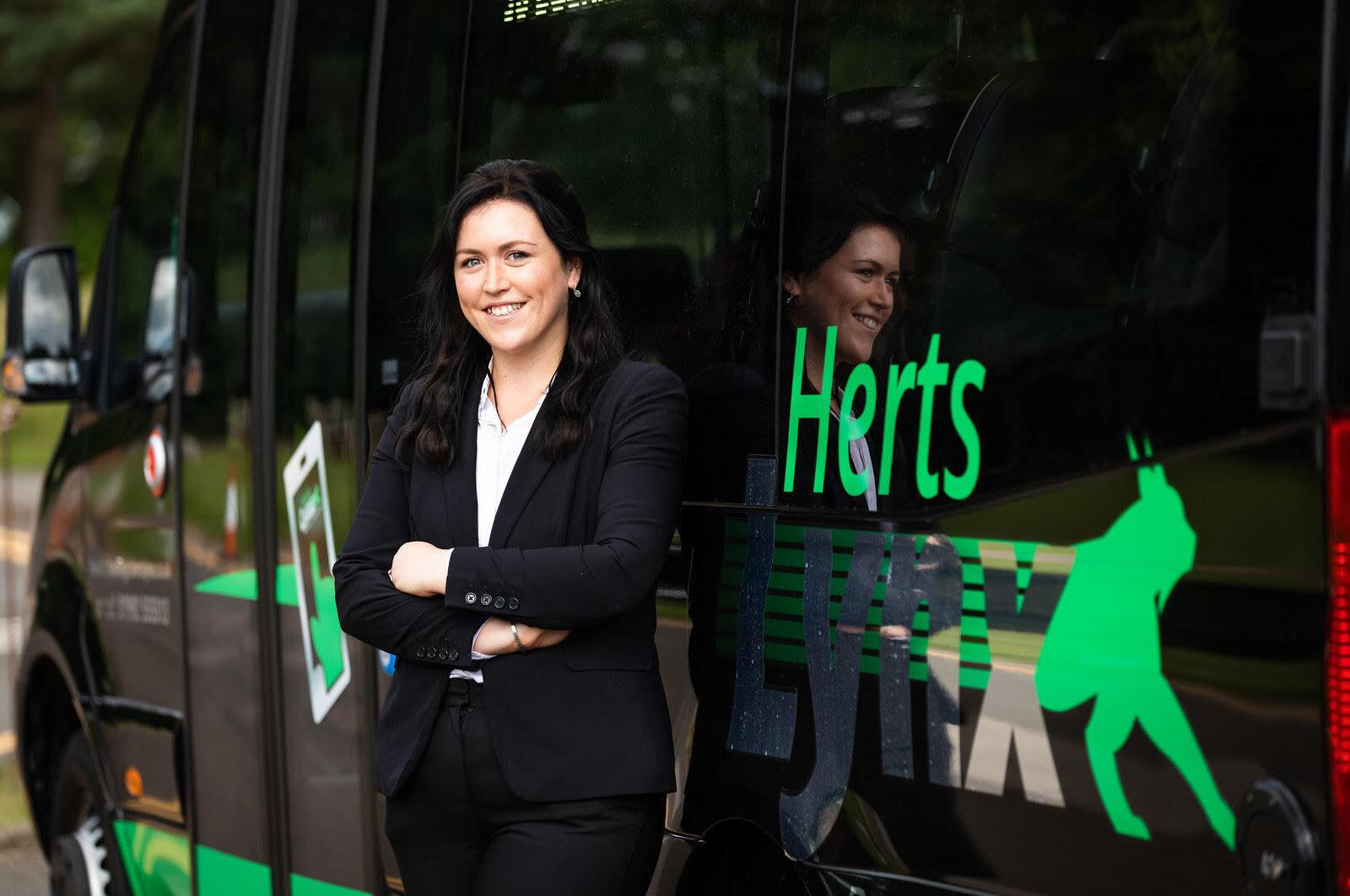
reviewed the service data.
“We’ve gone from a situation where we had very little data to one where we can review the data,identify trends and make sure the service aligns with them.”
This data means that the team can see people increasingly using the service for more diverse trips.
Passengers can use HertsLynx for travel anywhere in the FreeFloating Operator Zone (where there are no fixed routes) and from the Free-Floating Operator Zone to designated locations in the key hub towns. Travel is permitted between key hub towns but is not available for journeys between points within them.
“Initially journeys were from free-floating stops to the key hub towns.Now we are also seeking journeys within the free-floating zone – patterns more consistent with GP visits, social calls and local shopping.”
Conversely, the data can be used to adapt the DRT design to evolve with public demand.
“We know that 25% of passengers are SaverCard holders (between the ages of 11 and 25) and the college in Buntingford is one of the top three pick-up and drop-off points.So we’ve engaged with Padam Mobility to create a semi-fixed line to the college.The algorithm will ensure that students get to college on time but it will organise journeys to enable the most people to travel.”
The service surpassed its year one target within 10 months and has expanded in September 2022.
The rugged computers from Handheld are best known for the combination of high performance and the strength to be able to handle the most demanding field applications.

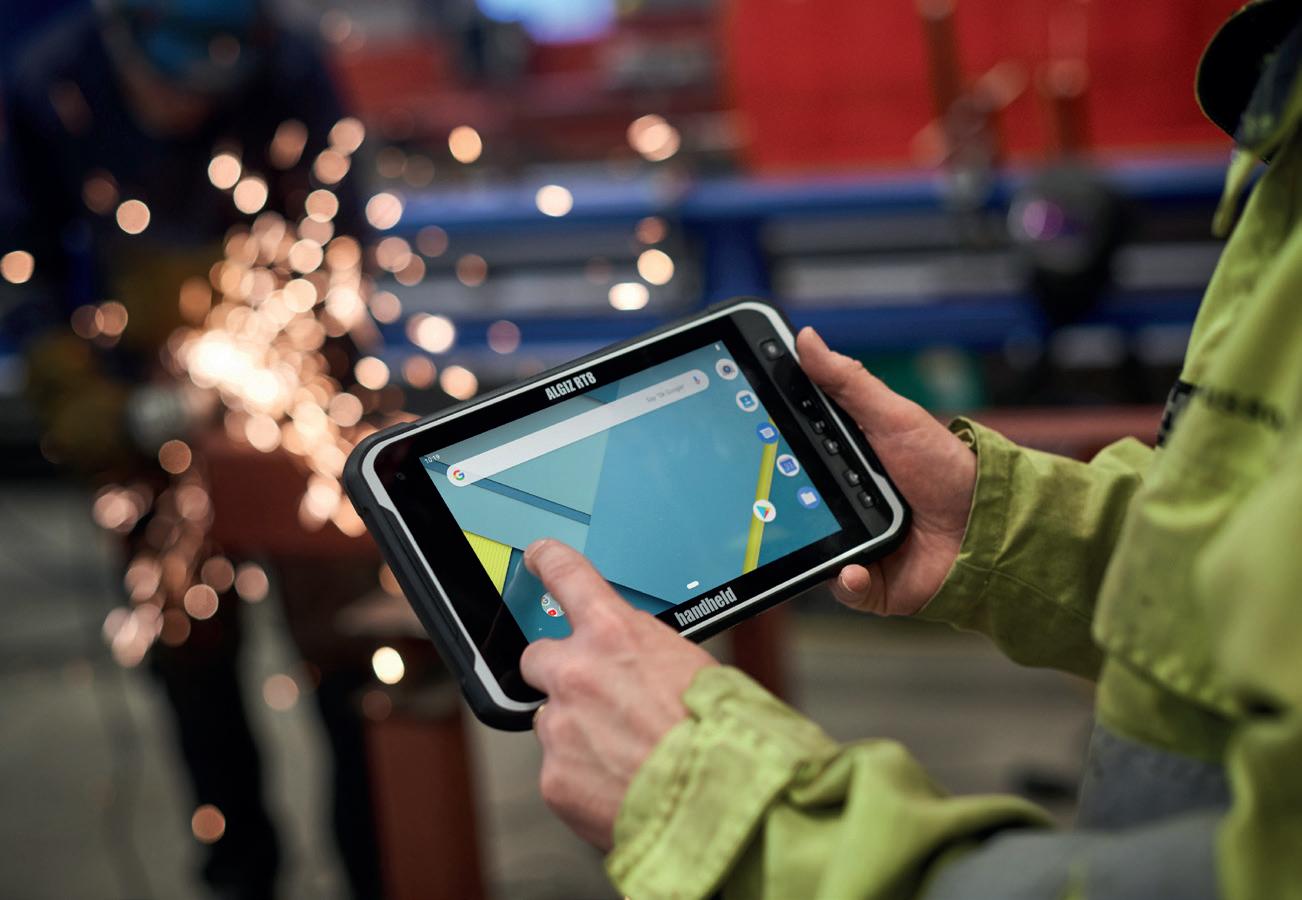
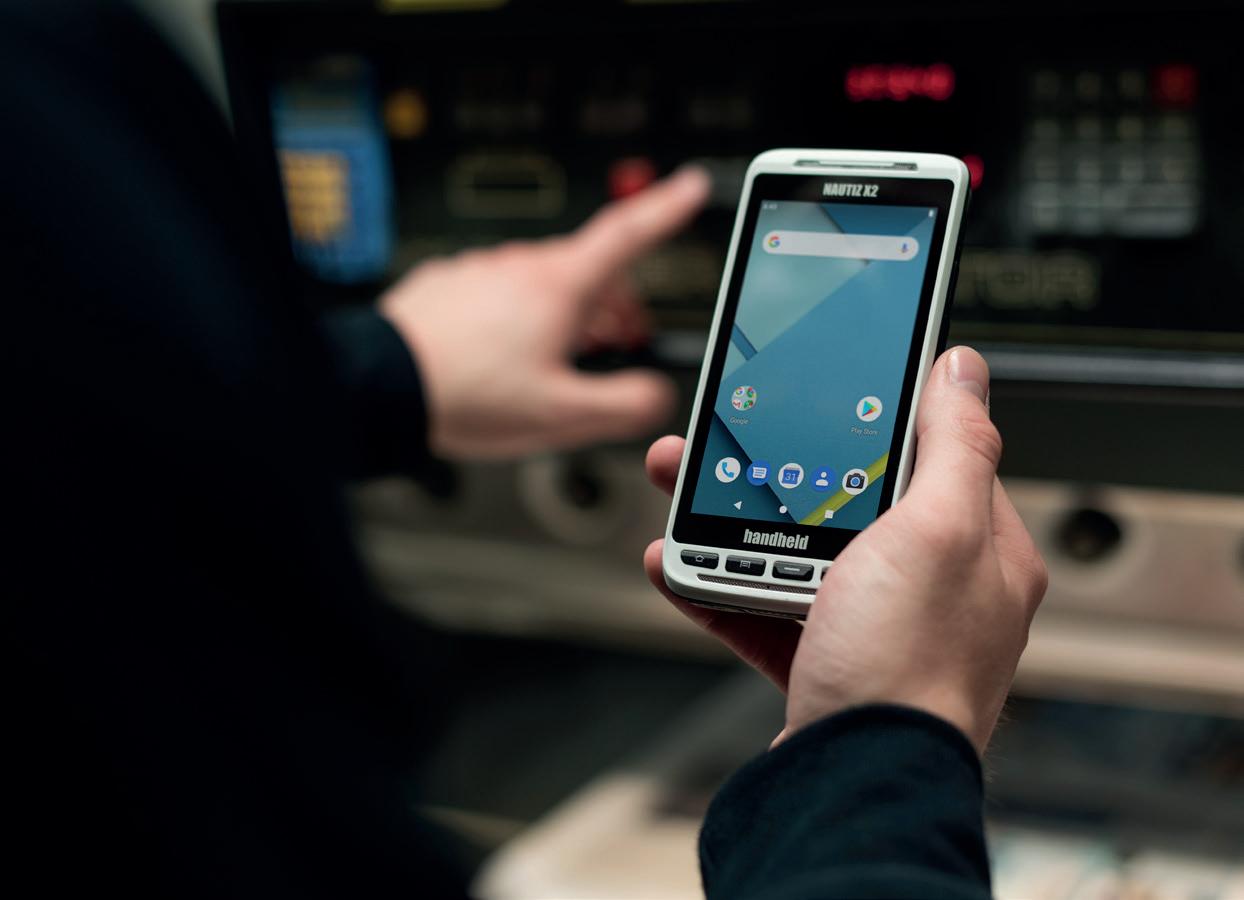
Laughing off the roughest weather and harshest handling, they are perfect for today’s mobile workforce, weather it is checking mobile tickets on board a public transport vehicle, or working outdoors building train tracks, roads and tunnels.

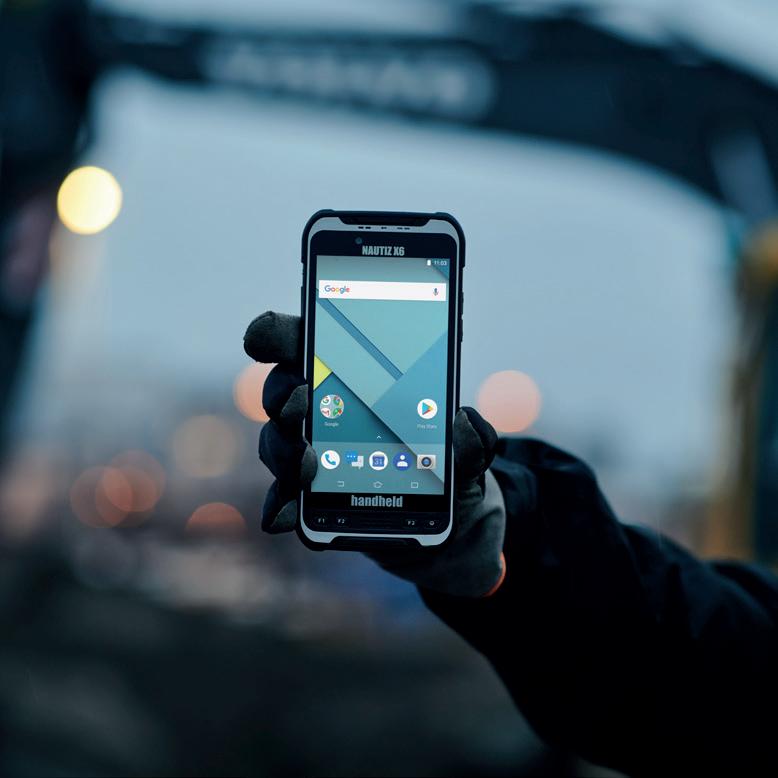
Using on-board rugged tablets as mobile routers for ticketing and data exchange.
Alarge European transportation system has deployed hundreds of Handheld Algiz rugged tablets to its public buses — and they’re using the tablet’s 4G/LTE connection to bring each bus’s local network online.
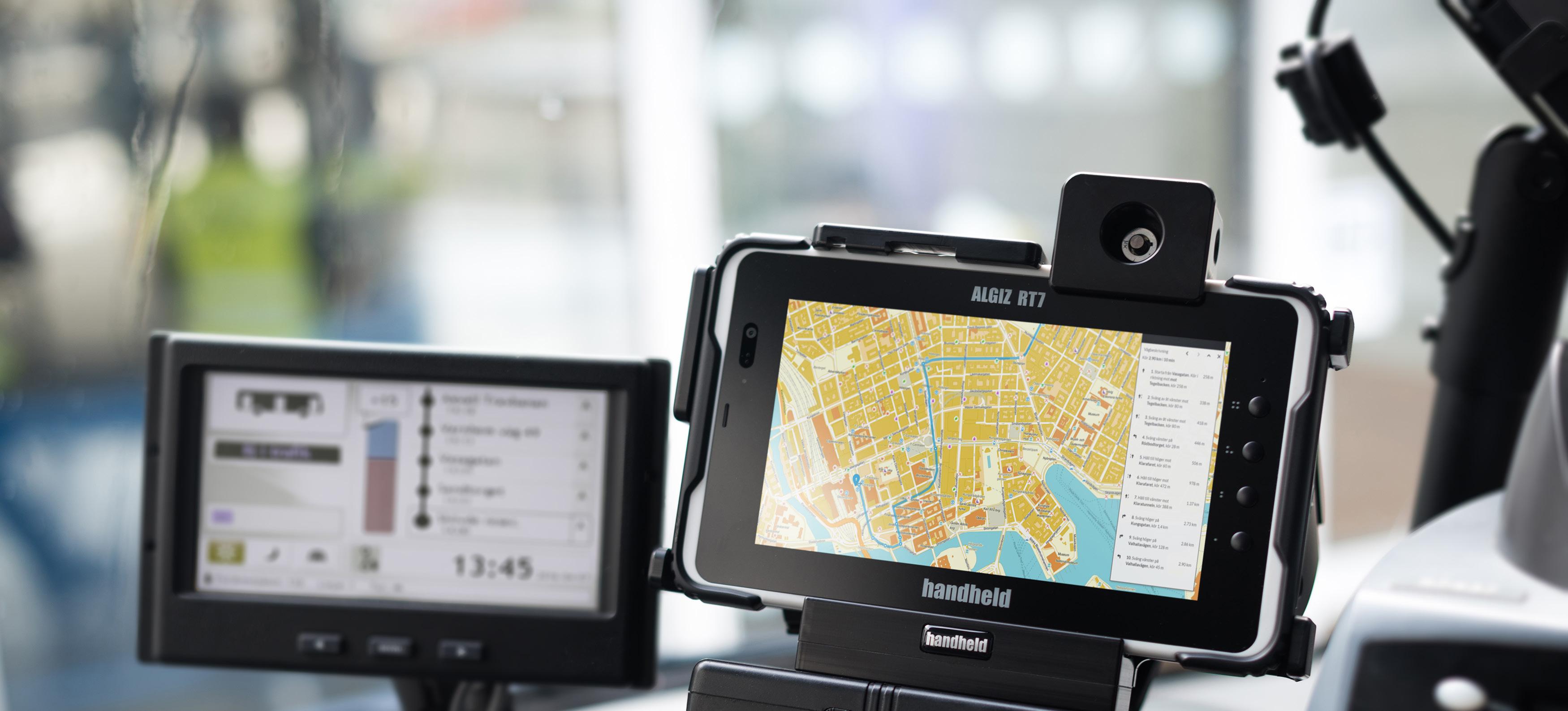
Previously, ticketing systems would store a day’s worth of data — such as travel card funds, number of passengers, locations travelled, and quantity of tickets sold — and then sync up with the central server while plugged into a cable overnight. This caused some significant problems, especially for travel card users:
“If a bus is on the road at 6am, and at 7am I fill my empty travel card with money from my home computer or mobile phone,that bus will only have the data from the day before — when my card was empty.
A less understanding driver could remove me from the bus,” says Erik Hansdotter, Product Manager at Handheld Group, who helped implement this solution.

In contrast, buses equipped with a connected rugged tablet can exchange information in real time: each vehicle’s server is constantly refreshed with new data from the central server, and on-board transactions are sent to the central system immediately.
The transport authority worked with its local Handheld reseller to develop a solution that would keep buses connected all day, wherever they travel.
The Handheld team provided two custom settings for the agency’s
new fleet of Algiz rugged tablets: first, they set the tablets to turn on automatically via a powered vehicle dock — when the bus starts, so does the computer. Then they enabled each unit to provide internet connection to its bus through tethering.
Here’s how it works: every bus in the system has its own small local network (LAN), where data is exchanged between the onboard computer and check-in and check-out points at the bus’s doors. Handheld’s customised, efficient bus solution allows the Algiz rugged tablet to become a mobile router, sharing its 4G internet connection to the LAN via a plugged-in RJ45 ethernet cable.
When travel card users enter the bus, they scan their cards at the door. Funds are checked and

debited in real time from their online accounts, and transaction and location information are recorded in the central system.
Travellers who don’t have a preloaded bus card can enter the bus and purchase a paper ticket from the driver. The Algiz rugged tablet is mounted in a locked vehicle dock facing the driver, who can view all the available bus routes and fare lines on the tablet’s display.
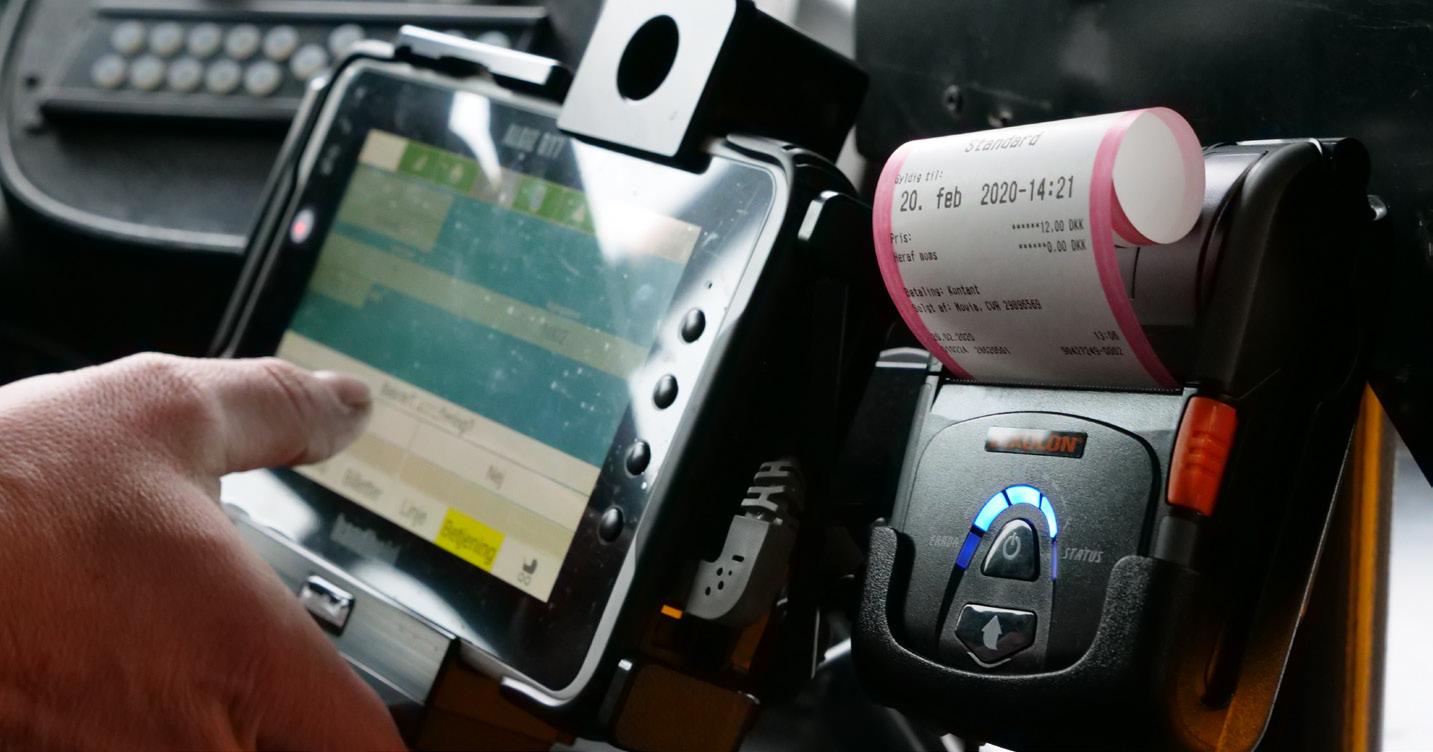
The driver selects the correct ticket and sells it to the passenger. When the transaction is complete, the ticketing tablet syncs travel data with the central server and sends ticket information wirelessly to a BT printer.
Vehicle-mounted tablet computers run all day long, enduring heavy use and constant engine vibrations. Each night, climate control systems are turned off and buses are parked – most often in a garage, but sometimes outside.
“Our customer needed a costefficient but rugged solution that was also easy to install in a mount, while taking up a small amount of space inside the bus cabin,” Hansdotter says.
All Handheld computers are built rugged – with strengthened glass screens and high protection scores for withstanding strong vibrations, repeated drops, extreme hot and
cold temperatures and dust and water exposure.
Public transportation agencies also like Handheld’s Algiz tablets for their numerous connections and communication options.
Along with LTE connectivity, they include a built-in dedicated u-blox GNSS receiver for accurate positioning and navigation. Many transportation customers also add an optional dedicated barcode scanner or eTicket RFID reader for mobile ticketing applications.
This bus-mounted rugged tablet provides connectivity, efficient and reliable on-board data exchange, smart ticketing, and fare enforcement for buses, trains, light rails, ferries and other public transportation systems.

Keeping fleets connected not only improves driver and customer experiences, but also provides accurate data and valuable travel analytics for operators and supervisors.
Enable public transportation vehicles to exchange data with the transport authority’s central server.
Solution Install 4G/LTE rugged tablets with custom LAN tethering settings to route internet connectivity to bus networks.
Real-time data exchange, including travel card funds, ticketing transactions and travel analytics.




Switchio is Visa Transit Ready.
• Public transit operators around the world are upgrading their payment experience to give riders more freedom and convenience
• Visa Transit, a robust global network of leading payment technology providers, accelerates implementation of cEMV payments in public transport
• Switchio, a unique all-in-one cEMV payment solution, meets Visa’s exacting global standards for quality and reliability
In a world where urban commuters are increasingly demanding speed, security and convenience in public transit, Visa-certified Ready for Transit partners are committed to providing the latest in cEMV payment technologies in line with Visa’s exacting global quality and
reliability standards.
Public transit network operators often use proprietary ticketing and fare collection systems based on closed-loop payment cards issued for a specific network or mode of transport. While these cards may work well within the given system, they are effectively useless anywhere else, and that makes them highly inflexible. Moreover,
the infrastructure required to administer them is costly and complicated.
When switching from a closed-loop system to an open-loop one, transit operators who turn to a Visa Ready for Transit partner such as Switchio free themselves of the immense financial and time burden stemming from the development of a modern cEMV payment infrastructure. They can devote more resources to other key aspects of their business, like growing ridership by offering the best-possible commuter experience.


Visa Ready for Transit gives operators easy access to a wide variety of certified technology partners to speed up implementation of new payment systems, including terminals, backoffice infrastructure and flexible payment gateways.

Switchio is unique in that its innovative payment technology is delivered as a comprehensive offthe-shelf solution encompassing everything operators need to upgrade their system and begin saving money.
“Technologies that enable contactless open-loop payments are already positively impacting the lives of millions of commuters worldwide,” says Jaroslav Stuchlík, Head of Switchio’s Transport and Parking Division.“Having a consolidated selection of the best technologies certified by Visa is a major step forward in the global digitalisation of payments in public transport.It’s never been easier to go digital.”
Visa Ready for Transit is a robust worldwide network of partners certified by Visa to accelerate the implementation of innovative payment solutions and services with the ultimate aim of improving the urban mobility payment experience for operators and their customers. The network is underpinned by new standards that simplify the certification of payment solutions for operators and transit solution providers.
Switchio is accelerating the transition to cEMV payments in public transportation.
Mastercard’s Transit Partner Program is an extensive global network of urban mobility experts and technology providers working within a framework of established global standards to accelerate the adoption of contactless EMV payments in public transportation by removing barriers to implementation.
The Czechia-based firm Switchio develops an innovative payment gateway that saves transit agencies considerable financial resources by enhancing their rider experience with modern contactless payment options. The solution is designed to let transit agencies move from a closed-loop system to a fully operational open-loop fare collection infrastructure complete with PCI DSS certification within as little as three months.
Existing fare management and collection systems are costly, and the infrastructure underpinning them is difficult to future-proof. Moreover, they present many unnecessary barriers to rider convenience, such as overly complex ticketing options, long queues at peak hours, delays due to excessive dwell times (i.e. vehicles having to wait at stops as passenger transactions are processed) and a lack of interoperability with thirdparty service providers.
By tapping into Mastercard Transit & Mobility Solutions, agencies gain access to innovative solutions such as Switchio’s all-in-one cEMV payment platform, delivering a wide range of benefits:
• Sustainable ridership growth
• Increased travel frequency
Greater speed and security
• Less congestion, fewer delays during rush hour
reduced
fare evasion
• No cash and coin handling costs
• Smaller transaction fees through aggregation
• Digital tickets are more ecofriendly than paper tickets
• Superior ridership tracking and reporting capabilities
Mastercard’s transit and mobility network brings together technology leaders from across the urban transit ecosystem who understand that public transit users are not mere riders but are also residents, schoolchildren, parents, business owners and tourists who

must interact with multiple civic services every day. Mastercardcertified transit-ready partners are an essential component in a unique holistic approach to cities designed with a primary focus on people and the community to bring about greater financial inclusion, community reach and engagement while making essential everyday services as accessible and convenient as possible.
Jaroslav Stuchlík, who heads Switchio’s transport and parking division, sees immense value in this type of network. “Technologies that enable contactless open-loop payments are already changing the lives of millions of commuters worldwide,”he says.“Giving transit agencies a comprehensive selection of the best technologies certified by Mastercard is fundamental to accelerating the adoption of cEMV payments in public transport. Switchio is proud to be part of it.”
Mastercard has more than a decade of experience engineering innovative urban mobility solutions and reshaping public transit experiences.
Certified partners from across the ecosystem adhere to global standards to accelerate the adoption of contactless payments in public transportation. Cities and transit agencies turn to this robust network to address challenges in realising efficiencies, supporting public health and safety, and providing new levels of convenience for transit users.
Click here to watch our video with new team member Eric Pitts.
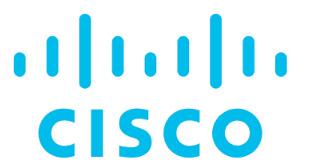
Many transit fleet operators are either investigating or already working towards modernising their fleets to improve efficiency, safety, predictability and passenger experience or to address climate change concerns… but the pace of change is governed by available funding and many transit agencies, who are operating financially in the red, have consequently been limited in what they can accomplish.
However, the Infrastructure Investment and Jobs Act (IIJA) in the US is a game changer and, along with other funding initiatives globally aiming to restore flagging transit ridership, is providing a huge infusion of capital to invest in electric buses and infrastructure upgrades for transit agencies to jump start their modernisation initiatives.
However, more must be done to define critical needs and appropriate solutions. One need is common across all transit agencies – an insatiable need for data (most in real time, some aggregated) in a secure manner to optimise operations and build a culture of on-time performance that benefits the entire ecosystem.
And the critical element in securing and reliably delivering data that is often overlooked is the network connectivity and operational visibility to the many systems on the vehicle, at the station and in

the yard. Cisco recognises this and provides best-in-class secure network connectivity via industrial routers like the IR1800 series, switches like the IE32/33/3400, and access points like the IW9167, along with layered security solutions like ISE, CyberVision, and Umbrella.
Additionally, with a targeted management tool for deployment, monitoring and overseeing maintenance activities, the Cisco IoT Operations Dashboard monitors transit systems and provides needed visibility for critical business applications and operations.
But first, let’s look at the big picture.
Efficiency. Passenger experience. Safety. These are some of the keys to operating a successful transit fleet.
The most common way transit fleet operators meet these needs
include leveraging information from vehicle telematics systems, real-time vehicle location, remotely connected devices in the vehicle and sensors. These devices and sensors are the ‘eyes and ears’ of the transit operation providing real-time insights into every aspect of the transit vehicle, capturing the movement of people between buses and stations, detecting/ flagging physical security risks and providing services and information to create a great passenger experience.
Some of the primary devices/ sensors included are:
• Computer-aided dispatch and automatic vehicle location (CAD/AVL)
• Manage route and realtime location information so dispatchers can see if the bus is on time, ahead or behind schedule, critical to a positive passenger experience
• Vehicle telematics
• Monitor vehicle parameters such as engine temperature, oil pressure, emissions, fuel economy, etc. in support of predictive maintenance, critical to improved operations as well as safety
• Fare collection systems for plastic card or mobile payment
• These support the revenue intake side of the business
• Passenger counting
• Useful for route capacity planning and complying with pandemic-related occupancy restrictions
• Allows passengers to choose whether to take the next bus or a later, less crowded service
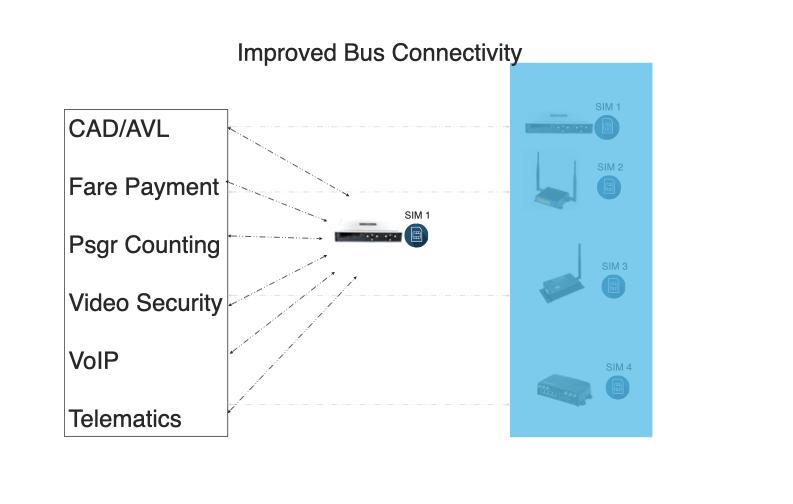
• IP security cameras (on vehicle and at stations)
• Capturing video on the bus and detecting events at the station is important to increasing passenger safety
• Capturing passenger movements both on the bus and in stations is important to understanding usage patterns
• Voice communications between the driver and dispatch centre
• Some things simply can’t be communicated except by voice
• Wi-Fi Access Point
• Built into the IR1800 industrial router
• Enhances passenger experience and provides free Wi-Fi to all riders
• Provides for bulk video data transfer and software updates in the station
That all sounds great, doesn’t it? But the operational gains from all of the connected devices and associated data can be stifled without a properly designed solution.
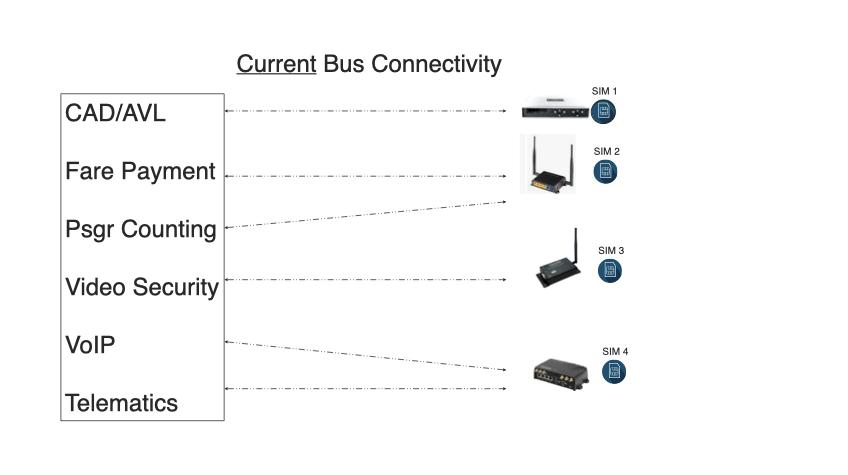
Consider Figure 1 which represents a piecemeal deployment approach:
The challenges presented by this approach include:
• Multiple management tools/ screens
• Lack of consistent (or difficult to manage) security policies
• Unable to see entire picture of network and device status in one place
• High maintenance and installation costs – antenna farm
• Required management of multiple SIMs
Then, look at Figure 2 which represents a unified deployment approach:
Advantages of the unified approach include:
• Unified management – single pane of glass
• Consistent security policies and administration
• Ability to see entire picture of network and device status and quickly troubleshoot
• Reduced maintenance costs, installation costs and power budgets
• Single or, at most, two SIMs to manage with reduced airtime costs
By consolidating, either fully or partially, and moving away from piecemeal solutions, fleet operations can benefit from simplified management, greater visibility, improved security implementation and lower maintenance and run time costs. This brings ease of use with consistency… a welcome combination! Of course, the vehicle router must have the capability to support the connectivity and security demands. The Cisco IR1800 series industrial routers provide the robustness, flexibility,
scale, security and performance required. They support dual LTE/5G, dual band Wi-Fi-6e, multiple PoE switch ports, high throughput, Cisco multi-layer security and edge application hosting in a ruggedised transportation-ready form factor.

The other key piece of the puzzle for optimising operations is having an operational management tool that provides the deployment, monitoring/alarming and troubleshooting capabilities needed to keep fleets running and reduce costly failures that inflict pain on operations and passengers.
Visibility is key! When the vehicle telematics system or CAD/AVL or fare collection system or security cameras fail (and they will), you must have immediate visibility to
rapidly respond and minimise the impact. Moreover, the ability to detect and fix some issues without having to take a vehicle out of service is worth its weight in gold.
With Cisco’s IoT Operations Dashboard fleet operators can quickly be alerted to a detected problem, assess the source and fix problems with connected equipment. It’s a modular cloud service with a simple user interface to help operations teams view important data about the health and operational status of connected equipment and sensors, using an IR1800 industrial router.
In the figure above, each dot represents a uniquely named transit bus with an IR1800 series router on board. A red dot indicates that one of the connected devices on the bus is malfunctioning. One click shows which system has the problem – say, an offline fare payment system. With an additional click, the
operator can learn about the status of the connected devices on the bus as well as the router.
With one more click the operator can learn more about the failing device and open a secure remote session to that device from their browser, using one of several industry standard protocols, to diagnose the problem or view the device details – a fast solution to many problems.
Quick, easy visibility and problem resolution. A powerful combination.
As you address your fleet modernisation programme, consider efficiency, passenger experience and safety – some of your top priorities. Let Cisco help you achieve them with the winning combination of the IR1800 series industrial router and IoT Operations Dashboard.
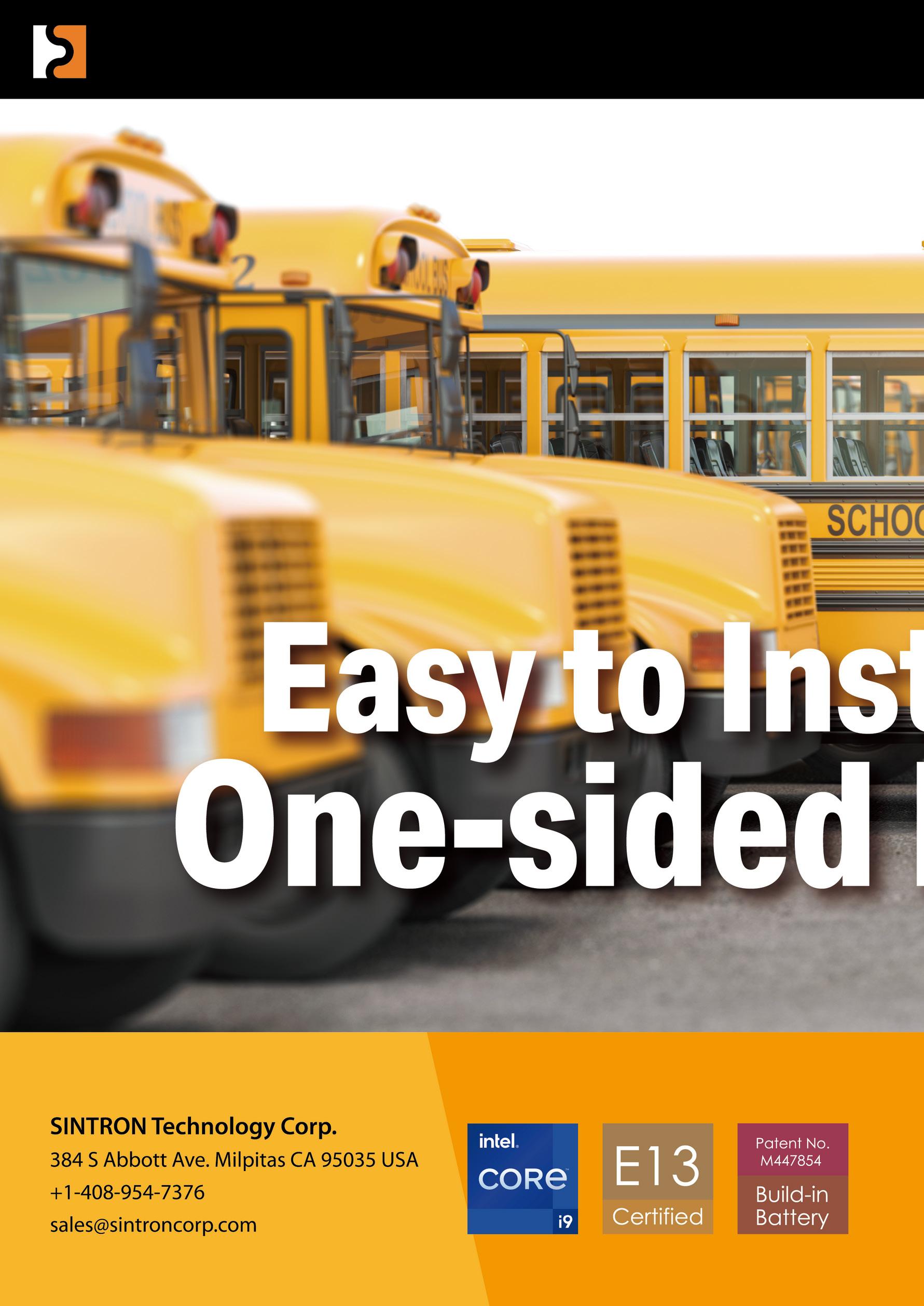
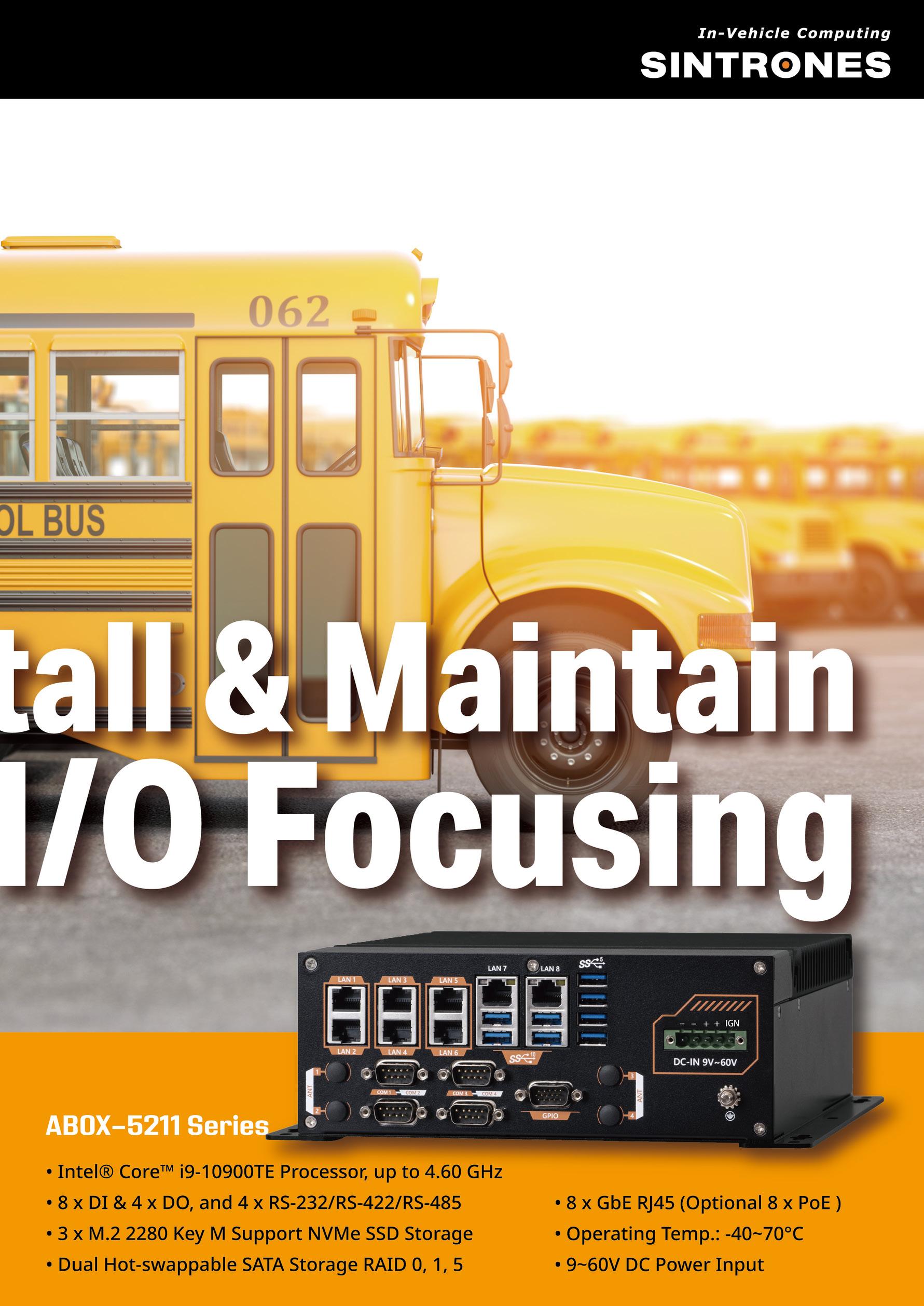
SINTRONES’s new ABOX5211 series in-vehicle computer is equipped with the 10th generation Intel Core™ i9 processor, eight GbE, and optional eight PoE (Power-over-Ethernet), the industrial internet of things (IIoT) for various automated factories and mass transportation.
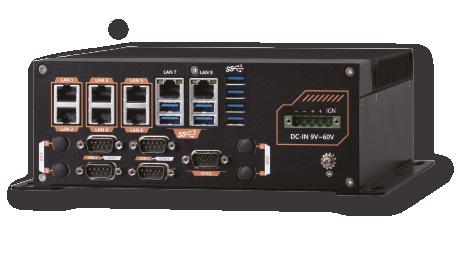
Equipped with dual SIM card slots to support 5G and LTE communication, it can quickly achieve stable and efficient wireless network transmission. ABOX5211 has a unique ‘one-sided I/O focusing’ integrated design, and all critical external device connection interfaces are designed on the
same side, which makes subsequent expansion and maintenance easier. Various arrangements and technical integrations are designed to meet the needs of – and are especially tailored for – the arrival of the electric vehicle generation.

Taiwan’s industrial computer industry has attracted worldwide attention. Among the many vertically integrated application fields, smart transportation has always been the main application with much-anticipated profitability. SINTRONES started with the manufacture of in-vehicle computing systems.
Since its establishment in 2009, it has accumulated more than ten years of complete R&D experience and successfully opened new ground in important markets such

as Europe and the United States. Through long-term accumulated practical experience of co-operating with end customers in Europe and the United States around design, we get the interaction and inspiration of countless precious customers’ first-hand feedback and then continue to accept the next challenge. We continue to develop various vital products so that all of SINTRONES’s products can be used in harsh vehicle situations.
For more information, please visit the SINTRONES website.
 ABOX-5211 Series
ABOX-5211 Series
The lack of visibility into key aspects of every fleet business, combined with manual tasks that require human intervention at all steps, limits both the efficiency of public transport operations and the amount of people that can access key services and opportunities.
The general public doesn’t realise it because we are used to the way it has always been, but a large part of the transportation industry is still labour-intensive, requires manual input every step of the way, and maintains a degree of separation between areas of the business that impedes real visibility and monitoring.
The result is a continuous, tremendous drain on repair and maintenance, fuel / energy costs and productivity losses. This is where predictive maintenance comes in – we created Stratio and developed our technology
to change the paradigm of how transport companies think about the maintenance of their vehicles, and solve the problems that prevent public transportation from being as efficient and reliable as it can and should be.
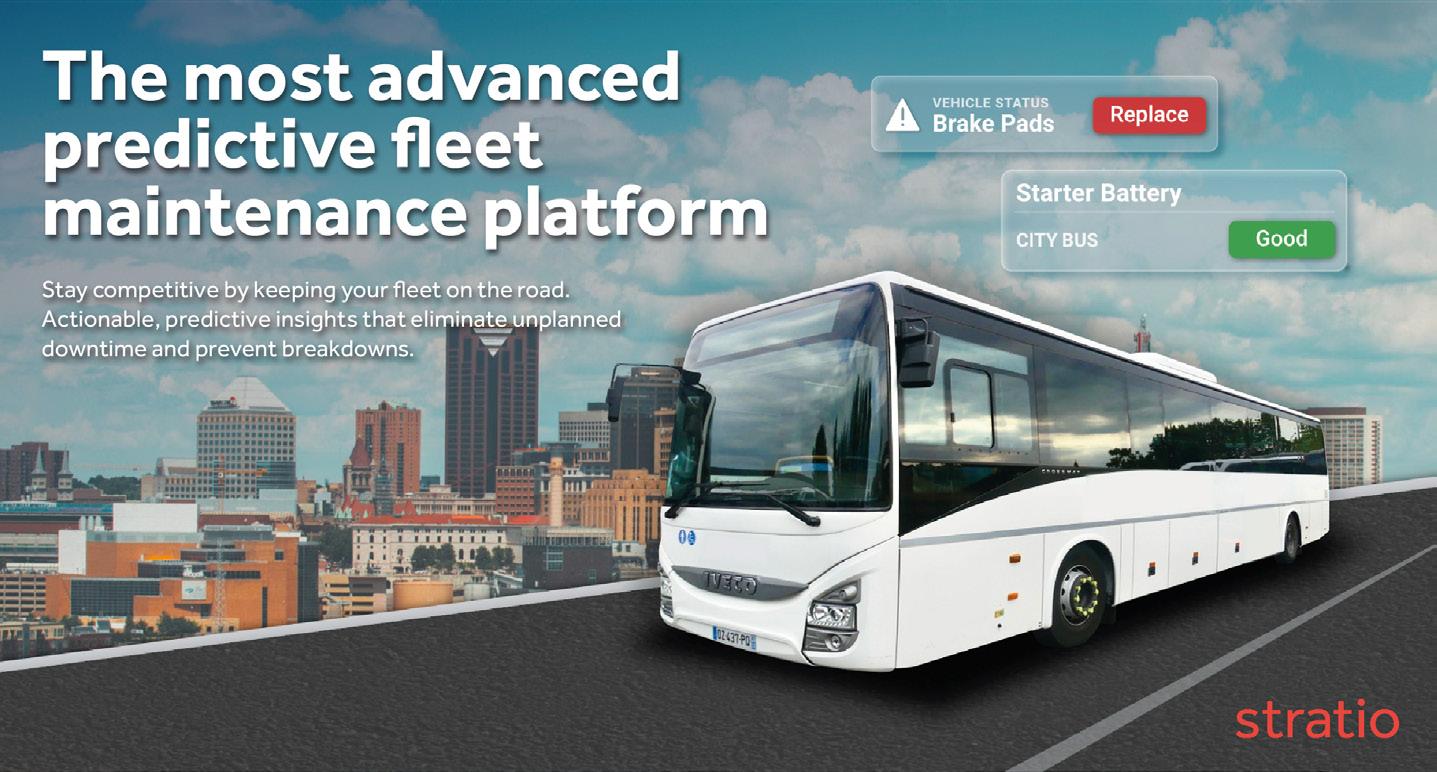
With advanced AI and ML algorithms, our platform analyses billions of vehicle sensor datapoints and turns them into predictive intelligence that allows transport operators to know when a component might fail… before it does. This enables the streamlining, digitalisation and automation of maintenance operations in a way that wasn’t possible before.
It’s a bit like being able to see the future – AI can spot patterns that humans can’t, sifting through and analysing amounts of data that it would be unthinkable to process manually.
The intelligence that this process generates can also be turned into automated maintenance plans, and is fully integrable into other platforms, systems and tools.
This intelligence allows public transport operators to pursue a zero-downtime strategy that enables them to save costs, improve operational efficiency and offer a more reliable service to passengers.


The European Green Deal has set ambitious targets of reducing greenhouse gas emissions by 55% by 2030. With the EU’s ban on ICE vehicle sales set for 2035 also looming large, transitioning to electric vehicles has never been higher in the priorities of public transport fleet operators.
However, electrifying an entire bus fleet while remaining profitable is no small feat. Electric vehicles are a relatively new technology, and the upfront cost of an electric bus is still significantly higher than that of an ICE bus, meaning that a solid strategy needs to be put in place to compute the life-cycle costs of the transition.
Batteries are by far the most expensive component of electric buses, accounting for an average
of 40% of the cost of the vehicle. Therefore, their performance and their lifespan are key factors influencing the total cost of ownership of electric buses and can make the difference between a successful investment and an unsuccessful one.
To tackle these challenges, Stratio partnered up with Caetano Bus and the University of Halmstad to set up the Battery Cortex project, aimed at providing EV OEMs and fleet operators with insights into the quality, faults and anomalies of the battery packs, the most critical component in EVs.
What is different between existing AI models and those developed by the researchers of the Battery Cortex Project is that, rather than just collecting and analysing battery data, the framework they designed also takes into account vehicle data. This is important because the variables that influence the lifespan of an electric bus’s battery pack
include things like air conditioning and external temperature; therefore, the more granular the data collection is, the better and the more accurate the prediction will be.
The Battery Cortex project and its findings were instrumental for Stratio to be able to offer a mature and reliable predictive fleet maintenance service for electric vehicles. The AI and ML algorithms developed by the researchers were incorporated into the Stratio Platform, which can now serve electric and ICE fleets alike.
This also means that, while extending the life-cycle of battery packs, public transport operators can keep their electric buses on the road with predictive maintenance analytics, integrated and automated to give maintenance managers a single pane view of the state of health of their vehicles, whatever the type, brand, model or age.
To eliminate costly unplanned downtime, maintenance operations need to work like a well-oiled machine. From the head office to the workshop, visibility is essential to ensure that all teams are working in concert, following accurate servicing schedules to keep vehicles on the road.
For this reason, Stratio has been designed to have a fully open API that enables the free flow of data across different tools and systems. In particular, software company Freeway Fleet Systems, which provides systems to many of the UK’s largest bus operators, has joined forces with Stratio to bring the latest predictive maintenance technology to the UK bus and coach market.
Freeway is designed to improve asset management, compliance and fleet maintenance with a paperless solution working seamlessly across different platforms. The system automates asset management, maintenance, defect management, stores and stock control, purchasing and compliance. With a centralised system that can operate across multiple sites, Freeway synchronises with mobile devices used by workshop technicians, drivers and managers, to provide enterprisewide visibility on the status of the entire fleet.
“There have long been demands for live diagnostic data from vehicles to be incorporated into vehicle maintenance planning,” says Patrick Tandy, Managing Director of Freeway.
“With Stratio’s smart technology there is at last a solution that delivers exactly what operators
want.We see Stratio as a real gamechanger and work to integrate our respective platforms is already underway.”
At Go-Ahead Ireland, Stratio’s platform has been successfully integrated with Freeway to provide crucial, real-time, information of onthe-road vehicle performance and condition. Freeway receives vehicle sensor data live from Go-Ahead buses via CAN bus.

Stratio also collects wheel and tyre pressure data for Freeway from an integration with Wheely-Safe, a wheel-loss prevention system. This provides a single point of visibility into the operation and, through business analytics, gives a comprehensive insight into the costs of running the fleet.
You can meet Stratio and Freeway Fleet Systems at the Euro Bus Expo 2022, at booths T60, T62 and T92.
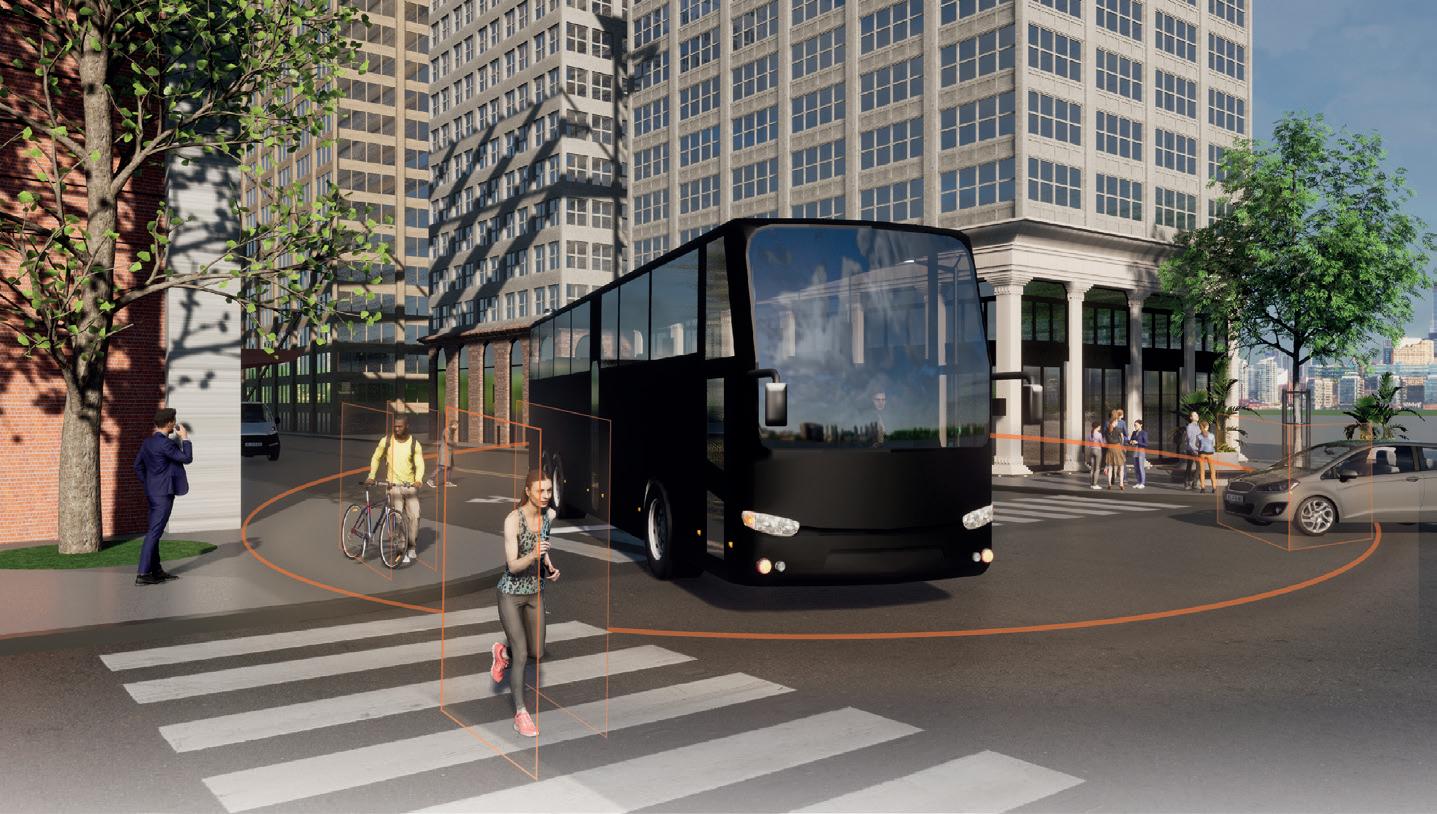
Safe Turn Alert (STA) and Blind Spot Awareness (BSA) are two safety products from Protran, geared at addressing potentially dangerous conditions that arise when buses make turns in busy traffic intersections.

This article describes how these two products help bus operators reduce accidents that occur when buses collide with pedestrians and bicyclists.
Buses are designed to protect passengers in the event of catastrophic roll-overs. The RollOver Protection System (ROPS) includes structural beams, designed to take the weight of the bus in case it flips over. The so-called ‘A-pillar’ is the one at the front of the bus. Because it is structurally re-enforcing, it typically has a large cross-section.
As a result, it blocks the view of the driver, as shown in Figure 1. The bus industry has not been able to solve this problem other than offering surveillance camera-based solutions, but those may distract the driver. Figure 2 shows the blind spots during a right turn. Figure 3 shows a busy intersection in a major US city. Note the pedestrian in or very close to the driver’s blind angle.

STA consists of a sensor and a control unit that detects when a
bus-driver initiates a turn. The STA system delivers an audible alert to pedestrians and bicyclists on the outside. The message comes out of

The Roll-Over Protection System (ROPS) includes structural beams, designed to take the weight of the bus in case it flips over. The so-called ‘A-pillar’ is the one at the front of the bus.
STA has GPS capability, which requires an internal GPS antenna to be mounted on the exterior of the bus. The STA system can be complemented with an additional product, the BSA.
When the BSA system determines that a pedestrian or bicyclist may pose a danger (e.g. a collision may occur), it alerts the driver immediately through visual and audible alerts in the instrumentation panel.
The lights are shown in Figure 4
Learn more at emea.harscorail.com
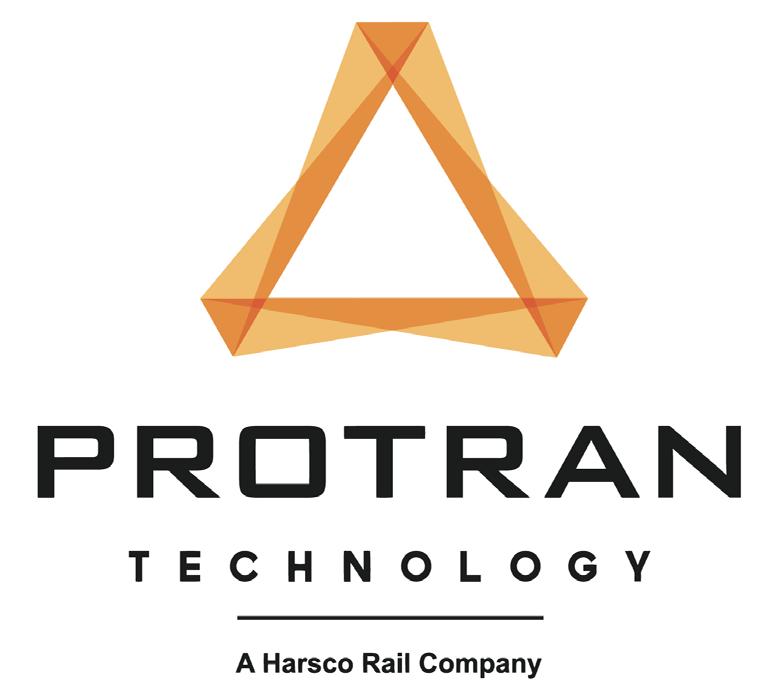
speakers mounted on the outside. During a turn, the bus makes an announcement such as ‘Attention, bus is turning’.
By alerting pedestrians through an audible warning, pedestrians and bicyclists get roughly two additional seconds to react to a turning bus – which often is the difference between an impact and a nonimpact.
BSA is an optional addition to the STA system. It requires the STA to be present on the bus and cannot be sold separately.
The BSA consists of sensors mounted in the front left and right corners of the bus. The BSA sensor uses radar technology plus advanced signal processing to track individual pedestrians or bicyclists and can make intelligent determinations about the potential danger based on locations, angles and speeds.
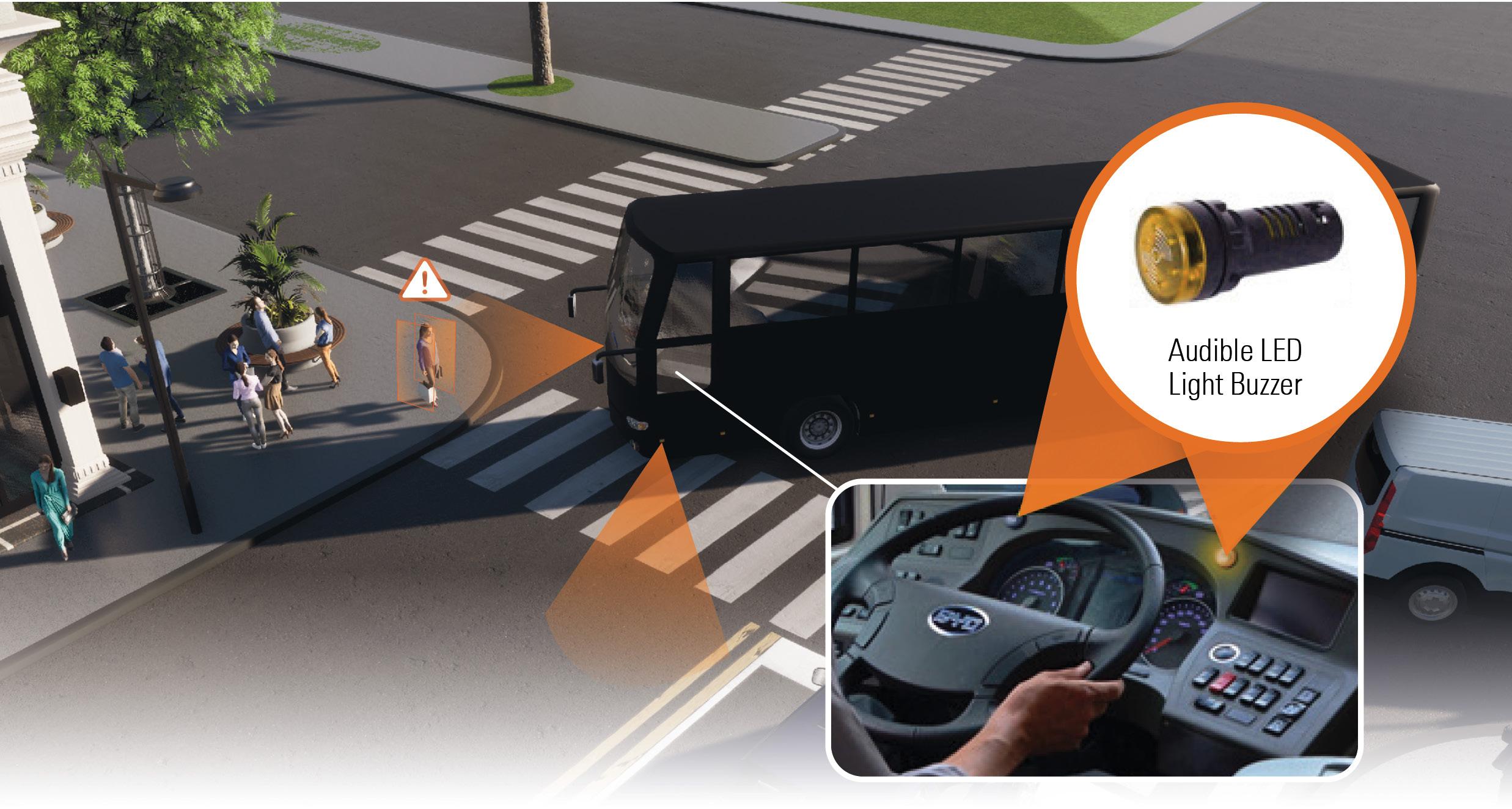


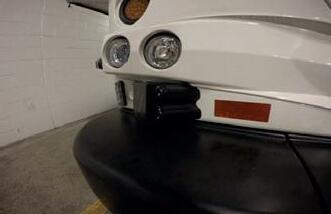

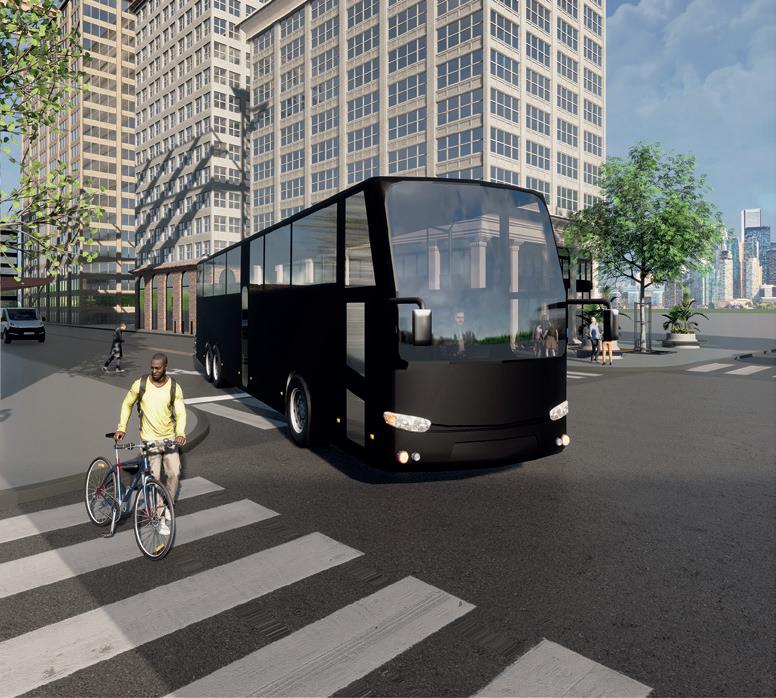



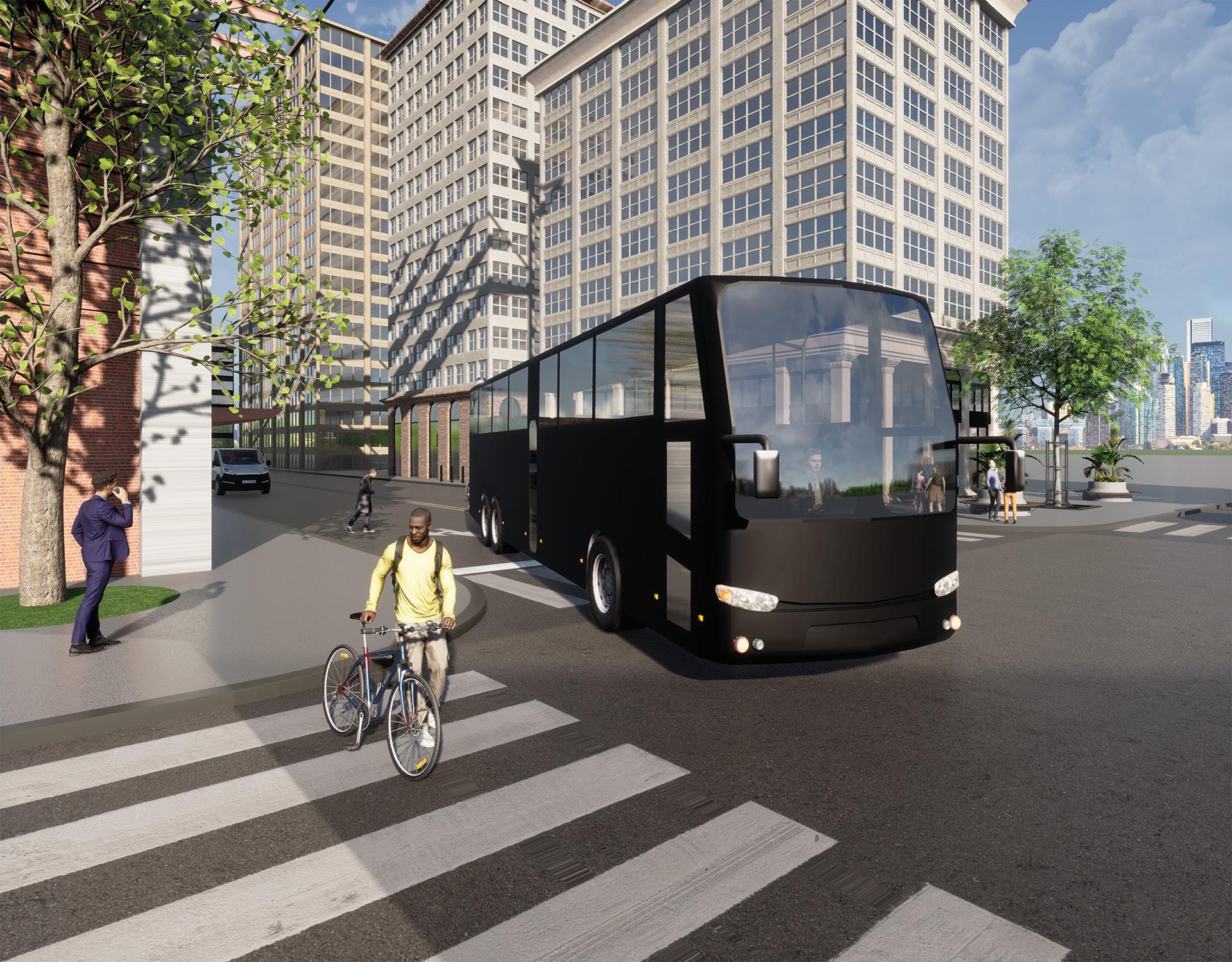




Question: Can you present NEoT Green Mobility and how your proposals help with deployment of zero emission vehicle fleets?
Aurélien Achard: NEoT Green Mobility is a financing platform for zero emission vehicle fleets. Created in 2017 by the Caisse des Dépôts et Consignations and
EDF, and reinforced in 2021 by the UK investment fund 3i and the infrastructure fund Mirova, it provides financing solutions for private transport operators and public authorities to promote their energy transition. It also provides manufacturers with complementary solutions for financing and marketing their vehicles. In practical
terms, NEoT Green Mobility buys vehicles, batteries or charging infrastructures and provides them to local authorities or operators under service contracts or operating leases.
Q: What are the advantages of your rental solutions?

AA: Firstly, the scope of our services, which range from energy packs (batteries and fuel cells) on their own to integrated solutions including vehicles, batteries and the charging infrastructure. Secondly, our ability to operate in different market segments, from minibuses to 18-metre buses, including coaches, logistics and shipping. Finally, we have great flexibility in terms of the duration of our contracts and their type. The volume of kilometres factored in is adapted to the needs of communities or operators.
The advantage of this solution is that it removes the initial investment barrier, especially in
this post-Covid period of rising costs when investment budgets are tighter. In fact, with electric vehicles, you have to pay for both the vehicle and the batteries. At the time of purchase, it is a little more expensive than thermal vehicles, whereas these vehicles pay for themselves in the long run because the energy and maintenance costs are greatly reduced. Our Battery-asa-Service solution balances out the level of investment and operating expense compared to a thermal solution, and could be off-balance. Our rental solutions are also compatible with certain subsidies, such as the ZEBRA tracks scheme that is available from the UK Department for Transport.
Q: So, do you cater to all types of projects?
AA: We are aimed at operators of large fleets of vehicles, for example at least a dozen buses, for long-term use of at least 5 years – and up to 16 years or more. Our geographical scope of activity covers the European Economic Area, Switzerland and the United Kingdom. I would also like to clarify that by zero emissions we

mean both battery electric vehicle projects and H2 fuel cell projects.
Q: You are also helping to remove the technological barrier that makes operators reluctant to make long-term commitments to recent technologies...

AA: Thanks to our in-house technical expertise, we are able to qualify products, which allows us to provide our customers with performance guarantees. We work with about ten different manufacturers and have about fifteen different battery models in our fleet. We have already deployed battery leasing and fleet solutions in France, Chile and the United Kingdom: for example, this year we implemented a Batteryas-a-Service solution with one of our partners, Hitachi ZeroCarbon, using their proprietary software platform and offerings in smart charging, telemetry, and low-carbon technologies across around 150 batteries for the operator FirstBus in Scotland – and we are already working with operators on TfL routes or on ZEBRA projects in the provinces. For a fixed monthly fee throughout the duration of the
contract, we guarantee the battery’s performance for the entire rental period, even if it means replacing it during the rental period, depending on the type of contract.
neotgreenmobility.com

NEoT Green Mobility buys vehicles, batteries or charging infrastructures and provides them to local authorities or operators under service contracts or operating leases.
NEoT Green Mobility offers financing solutions for public and private transport operators, public authorities, logistics operators looking to deploy Zero-Emission electric or FuelCell fleets: buses, coaches, trucks, ships, infrastructures.

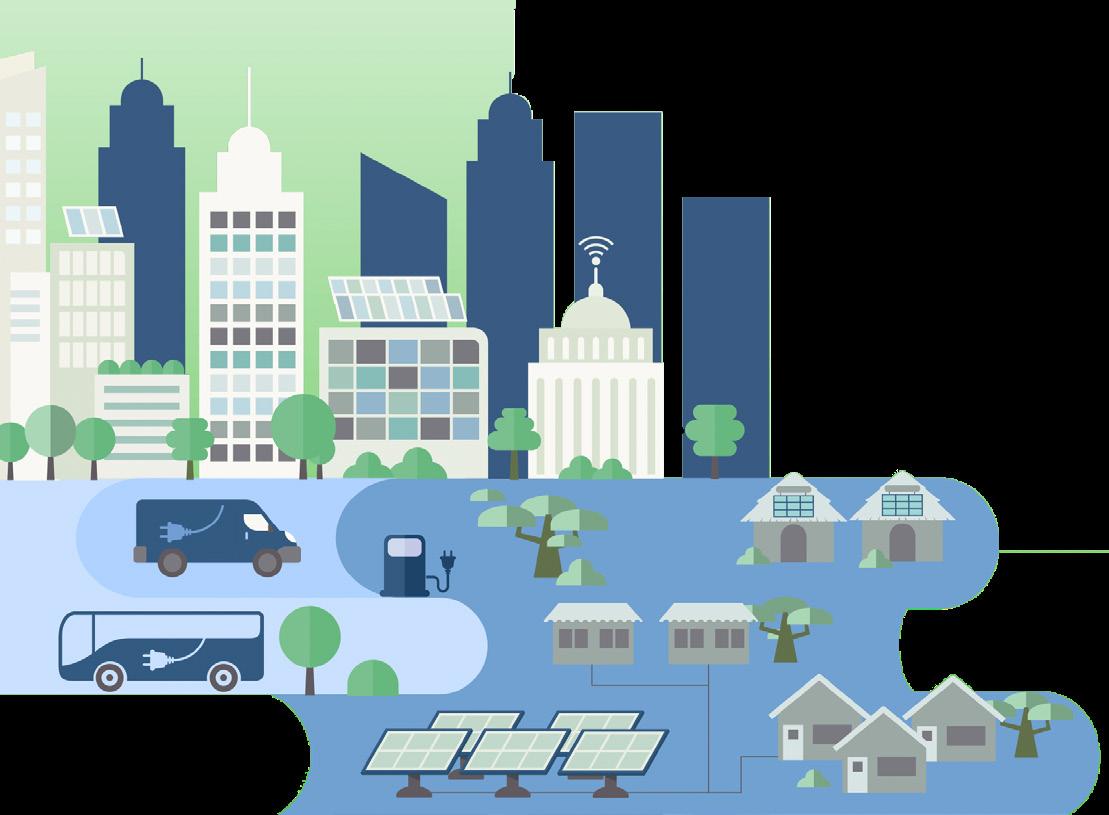

As such, NEoT Green Mobility
• reduces the initial investment for the Operator
• improves the TCO of the vehicles, by optimizing the batteries values
• takes on the technological risk
• facilitates discussions and interfaces with ZE mobility stakeholders (manufacturers of vehicles, FC, batteries, chargers)


